 She makes sure a Pheasant time is had by all. 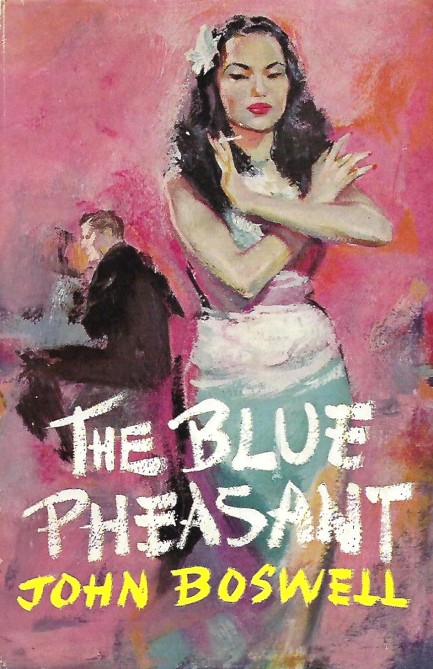
We were attracted to the 1958 John Boswell thriller The Blue Pheasant not only because of the lovely cover art, and the tale's setting in East Asia and New Zealand, but because the title suggests that a bar plays a central role. We always like that, whether in fiction or film. The teaser text confirms it. The title refers to a fictional bar in Hong Kong. Irresistible. The book stars professional photographer, amateur painter, and rolling stone Chris Kent, who's at desperate ends and takes a job to travel from Hong Kong to far away Auckland to recover two Chinese scrolls that are the keys to a vast inheritance. Needless to say, there are other interested—and ruthless—parties. In addition there are three femmes fatales: Sally Chan, the bar dancer who puts Kent onto the job; Sonya Sung, whose family are the rightful owners of the misplaced scrolls (or are they?); and Ann Compton, mystery woman who becomes Kent's reluctant partner.
We were amused by how easily Kent's head was turned by all three women. He's tough, but he's also an all-day sucker. In trying to sort out why women are so confounding to him, there are numerous moments of, “Well, what's a guy to do when women are ________” By the end, though, he starts to wonder if he's the problem. Spoiler alert: pretty much. The actual caper is well laid out, with a lot of sleuthing and surveillance, a few moments of swift action, a suspicious Kiwi cop, a love/hate dynamic between Kent and Compton, and precise local color in both Hong Kong and Auckland.
We consider The Blue Pheasant to have been a worthwhile purchase. That was actually almost a given, considering the low price for the book (Seven dollars? Sold!). But our point is that you never know what you'll get with a writer as obscure as Boswell. Well, now we do. And we have his sequel, 1959's Lost Girl. We'll get around to reading that later.
Turning back to the cover for a moment, the example at top is one we downloaded from an auction site because the William Collins Sons & Co. edition, which is a hardback with a dust jacket, shows the wonderful art painted by British talent John Rose to best advantage. The edition we actually bought is a paperback from Fontana Books, and our scans of that appear below. They're fine, but the cleaner Collins version is frameworthy. We have another Rose cover at this link, and we'll be getting back to him again shortly.
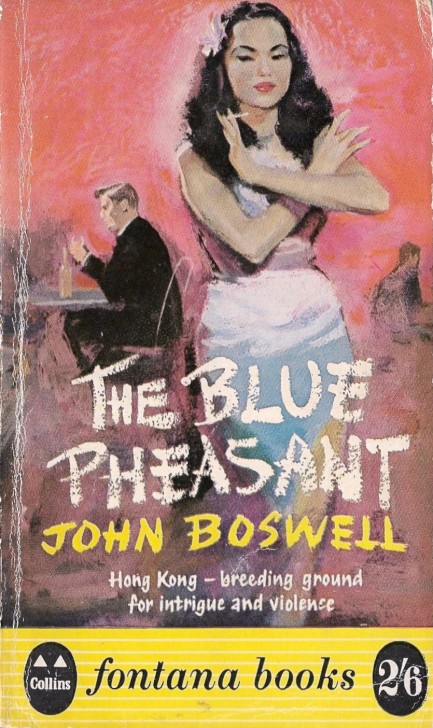 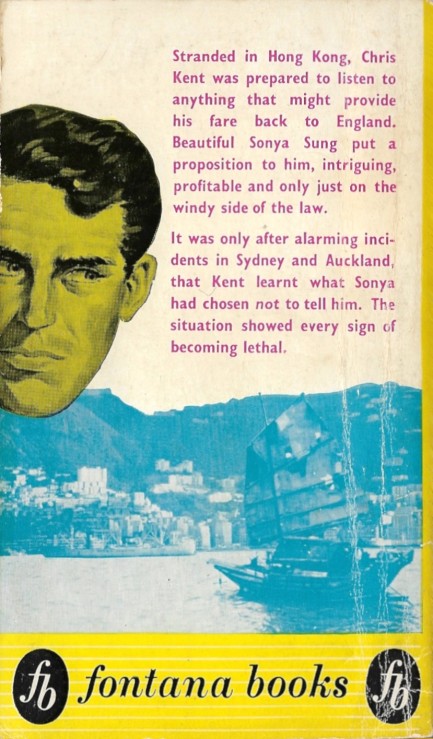
 She's cold blooded. That's why she wears fur even indoors. 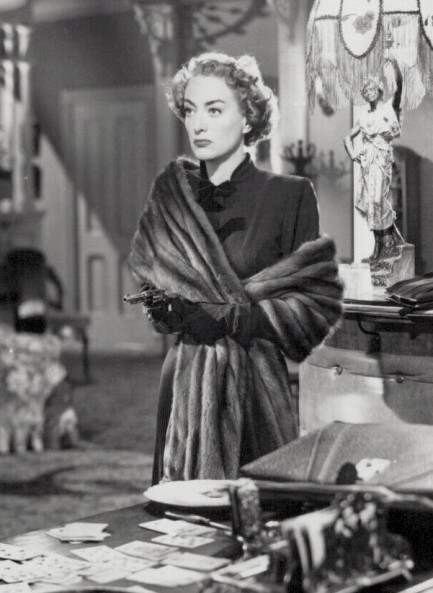
Here's a menacing promo image of Joan Crawford made when she was filming her 1949 melodrama Flamingo Road. This is a crop of a larger photo in which she's taking aim at villain Sydney Greenstreet, who made the mistake of getting on her bad side. We talked about the movie recently. Shorter version: Crawford absolutely killed.
 Joan is in her sweet spot with a challenging film role. 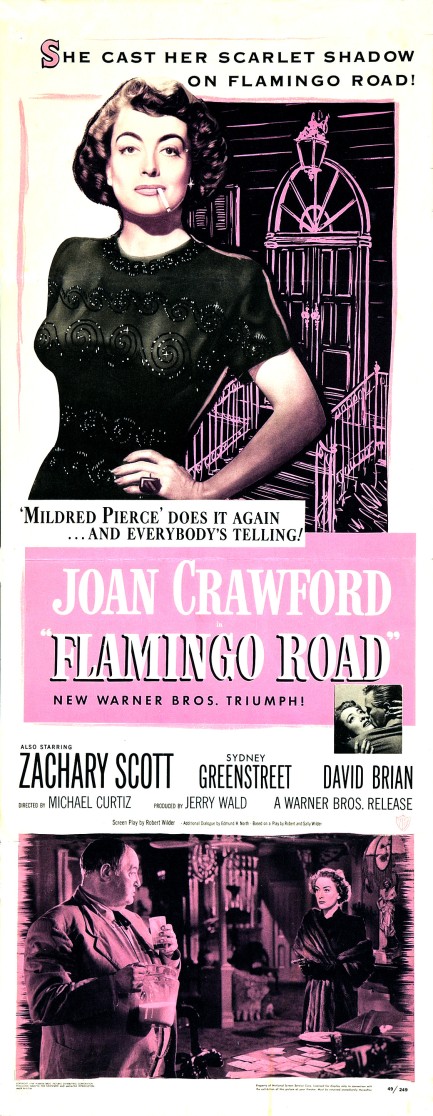
How do you judge a great acting performance? One way is when beforehand you look at the performer and the part and say, “Impossible, doesn't fit, can't possibly work,” then it does. Flamingo Road, which premiered in the U.S today in 1949, features Joan Crawford as a carny performer and it doesn't fit. But probably nobody would seem to fit. The main character evolves over years from carny chippie into upper crust lady, so either way a filmmaker would have to make a difficult choice—cast an ingenue who evolves into a sophisticated middle-aged woman, or cast a mature actress and hope she can play young. They chose the later option with Crawford, and it can't possibly work. But this is Crawford we're talking about—she could make most any role work, and does so here with a typically assured performance.
Flamingo Road is set in the American south and is about the social mores and political machinations of a small but wealthy town. The title refers to the enclave where the rich and powerful live together in their mansions and manors. The carny version of Crawford falls for local deputy sherrif Zachary Scott, but he's been tabbed by local kingpin Sydney Greenstreet to be his puppet in the state senate. As part of that plan Scott is to marry into wealth. Cavorting with a carny isn't going to fly. Greenstreet decides to break them up, or hurt Crawford trying, and there's nothing so underhanded or injurious that he won't do it. Crawford, though, is tougher than anyone expects, and what she learns from her travails is, first: she's going to make it to Flamingo Road no matter what it takes; and second: she will have her revenge. That's all we'll tell you about the plot.
Flamingo Road is another of those movies that's often called a film noir, and while we don't try to be gatekeepers of what is and isn't noir—because we have no authority to do so—we also don't avoid stating the obvious. Flamingo Road isn't a film noir. Some entities, including respected ones, have a vested interest in casting the noir net as widely as possible. If you host noir festivals, for example, after a while you need to expand your defintion of noir to keep your slate fresh. If you write film noir books, you might want to demonstrate that you think outside the box by including Chinatown or Lat sau san taam or The Limey (all excellent movies, by the way).
At the opposite extreme, several prominent critics attest that film noir doesn't exist at all. That's like saying there's no such thing as superhero movies because costumed heroes are just further iterations of superpowered characters such as Rambo. Superhero movies exist. So does film noir, though it resides within the wider genres of crime and drama. However, it's too easy to call any movie with conflict and a few neon-splashed night sequences a noir. Film noir is as much thematic as it is iconographic. In every way that we can discern, Flamingo Road isn't one. The definitive American Film Institute calls it a melodrama. We agree. It's a melodrama in which a good actress, aged north of forty, overcomes difficult casting to knock her years-spanning role out of the park.
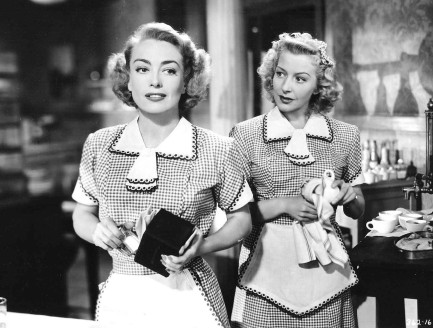  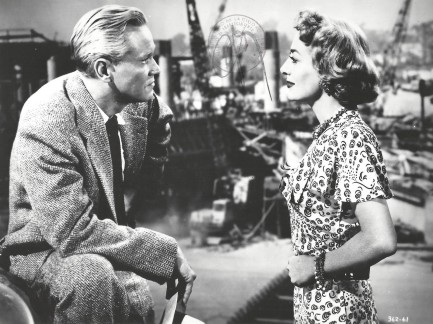 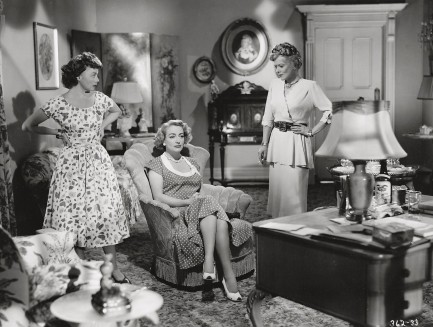 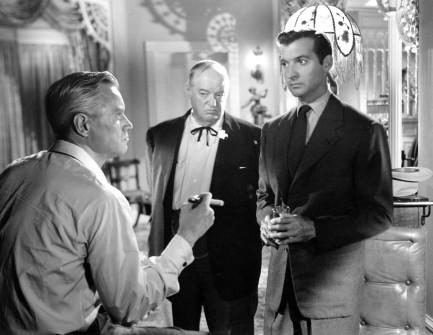 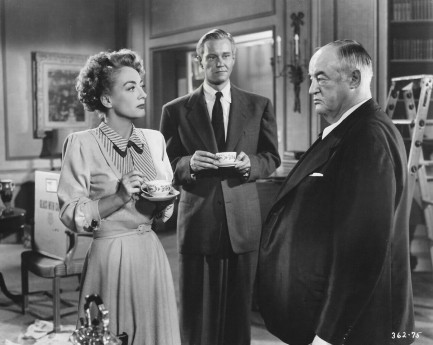 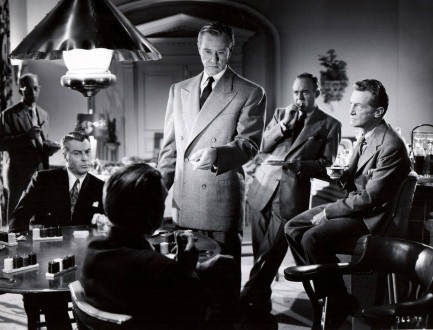 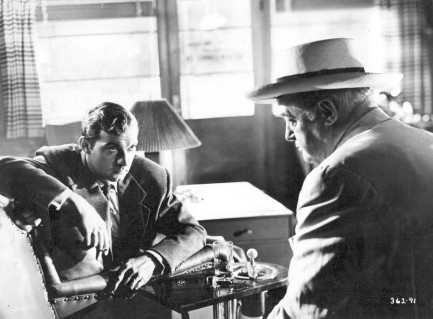 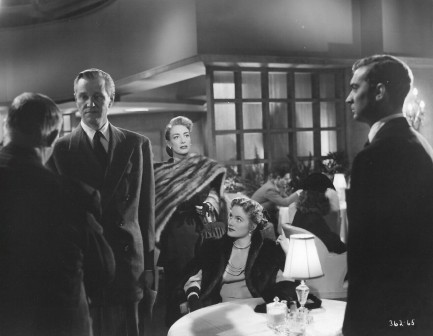 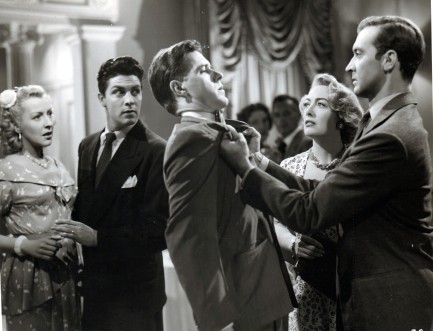 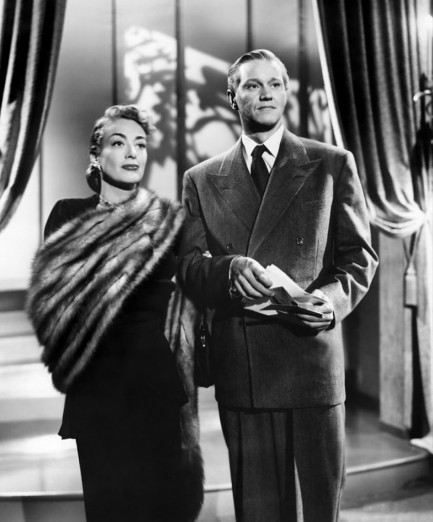 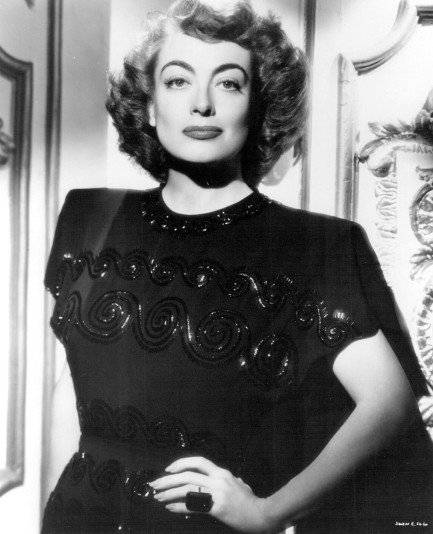 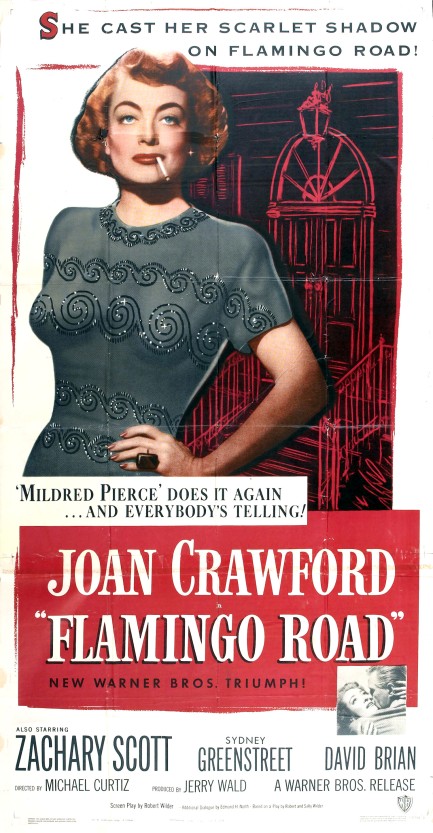
 She didn't make it to the top of Hollywood just to accept being second banana in Monaco. 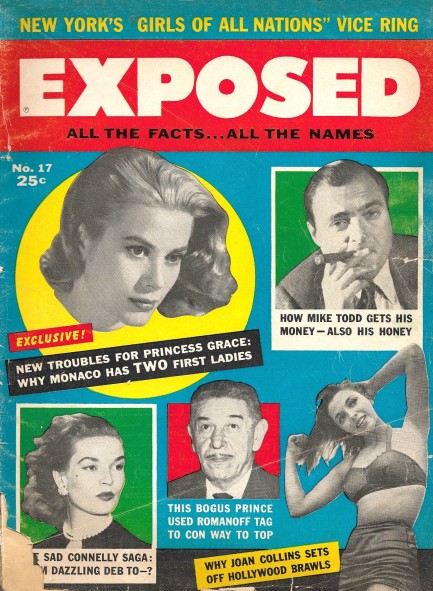
Yes, people were stupidly fawning over the rich long before 2021, as this issue of the tabloid Exposed published this month in 1957 proves. There are stories on one percenters ranging from Princess Grace of Monaco on down. Of course, there's an aspirational innocence to these old stories, because very few people, if any, begrudged the rich anything in this era. Those times have gone. Companies make hundreds of billions now and pay zero taxes. The rich have a thousand ways to hide their income, to the tune of 40 trillion dollars in cash hidden in tax havens around the world.
Something else different about the rich of yesterday—they didn't have dick-shaped rocket ships. Instead they had dick shaped yachts. And that's what the feud hinted at on the cover between Grace Kelly and Tina Onassis was about—in part at least. It was also about who threw the best parties, who had the richest and most influential friends, who had the best designer clothes, and who was the greatest beauty. Of course, Kelly was legendarily lovely, but because beauty marries money even when the money is as butt-ugly as Aristotle Onassis, Tina was no slouch.
Exposed tells us of one competitive episode the night Kelly was celebrating the birth of her daughter Caroline, which had happened a day earlier. Kelly lived in Grimaldi Palace, overlooking Monaco harbor, where Aristotle Onassis lived on an 1,800 ton former Canadian navy destroyer retrofitted as a luxury yacht. The night of Kelly's celebration Onassis left his boat totally dark in the harbor, then at one point flipped a switch that illuminated hundreds of light bulbs strung from prow to stern. Kelly's clan took it as an attempt to show her up. Sounds petty, right? Well, Exposed was a tabloid, and its readers absolutely devoured stories showing that they and the next door neighbor they hated weren't so very different from the one percent.
After that boat episode, according to Exposed, Kelly and Onassis barely saw each other in tiny Monaco, such was their determination to avoid each other. Again, the half-century old public obsession with these two seems quaint compared to people's interest in the Musks and Bransons of today. There are opinions and facts, and here is a fact—the U.S. is falling apart and miniscule taxes on the rich and corporations are the reason. During the year this issue of Exposed was published, a year many people now cast their misty eyes toward with longing and nostalgia, the tax rate for top income earners was 91%. No wonder things functioned so well, eh? High taxes kept the government flush and the rich weak.
But the highlight of the issue as far as we're concerned is Vikki Dougan, who we told you would return to Pulp Intl. soon, and who shows up at a party thrown by Hollywood astrologer Carroll Righter wearing one of her infamous buttcrack baring backless dresses. Exposed indeed. Since this is about as low as her gowns went, we zoomed in a bit so you can get a good look at the San Fernando Valley. Dougan by the way, is still around at age 92. Elsewhere in Exposed you get Joan Collins and her romances, restaurateur Mike Romanoff and his legal troubles, Paulette Goddard and her love of money, and vice in New York City. Thirty scans below.
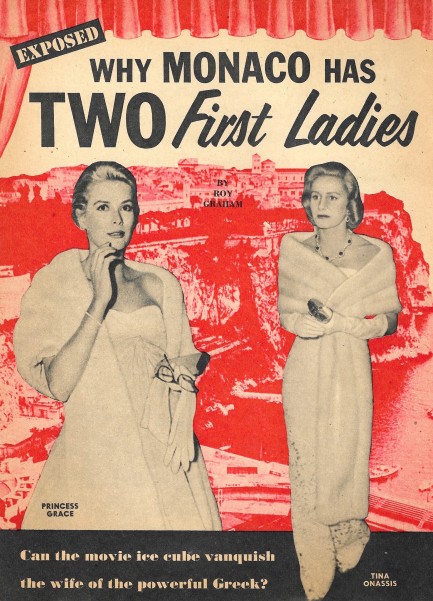 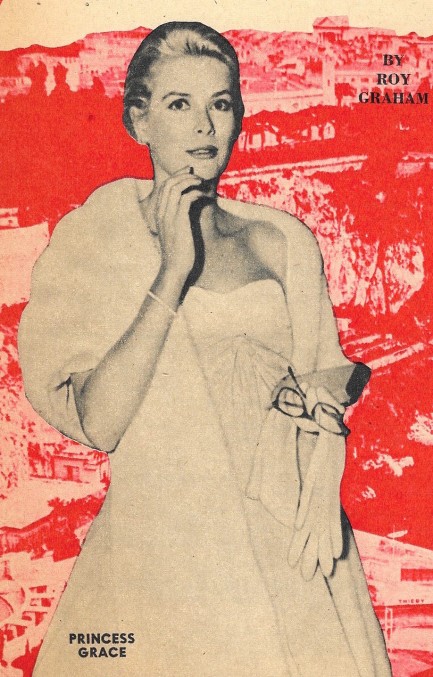 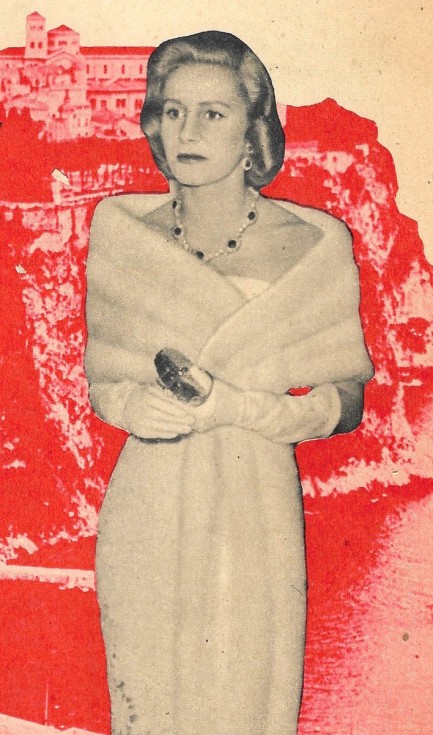 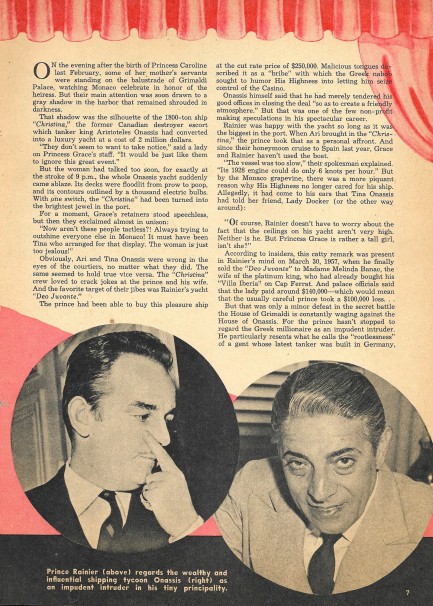 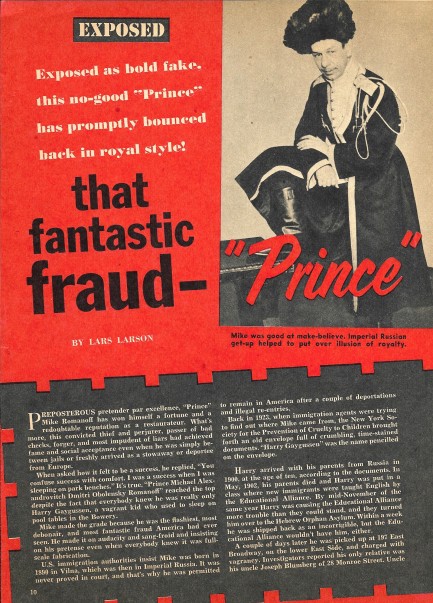 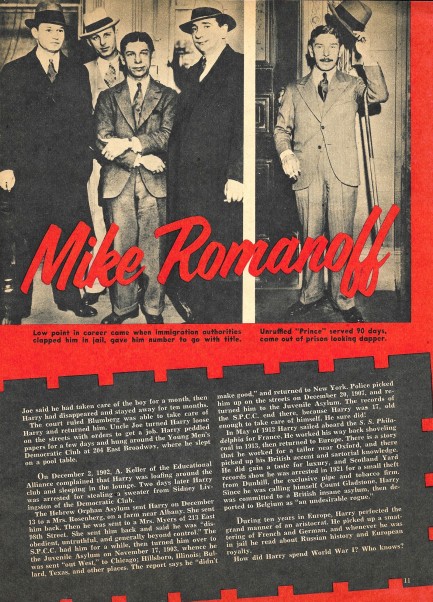 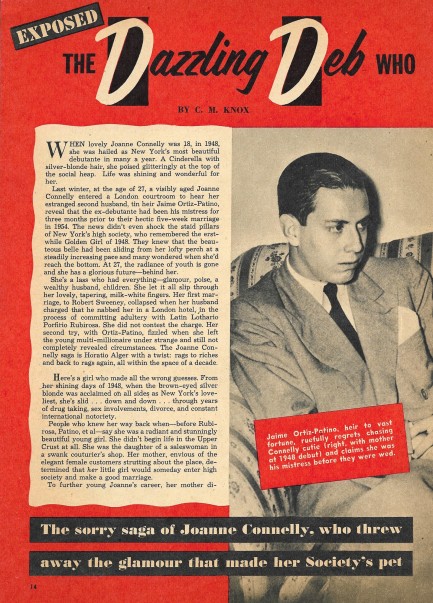 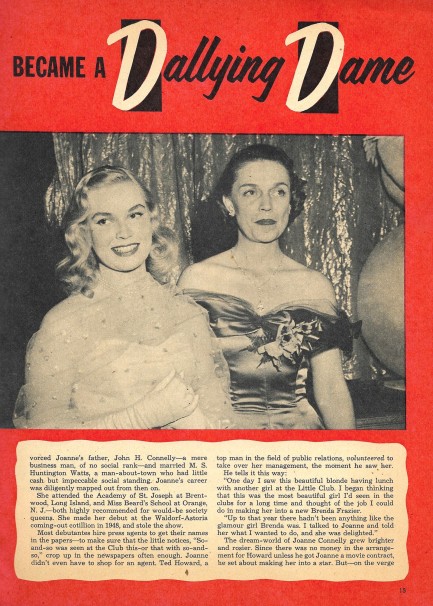 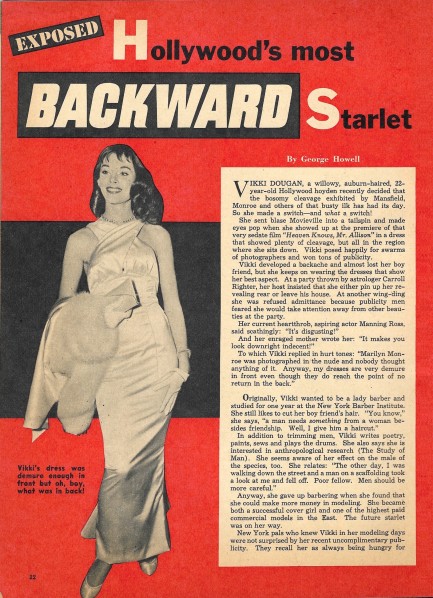 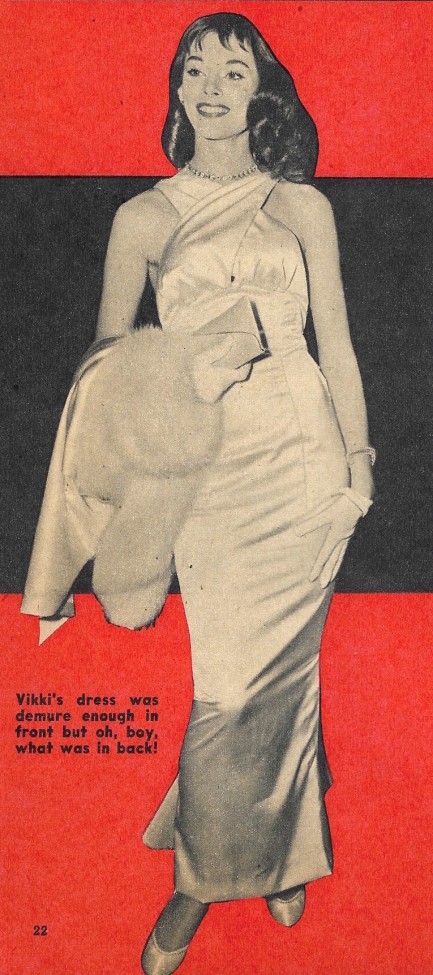 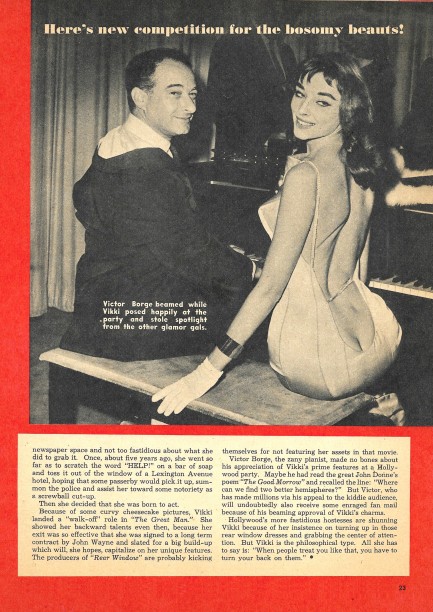 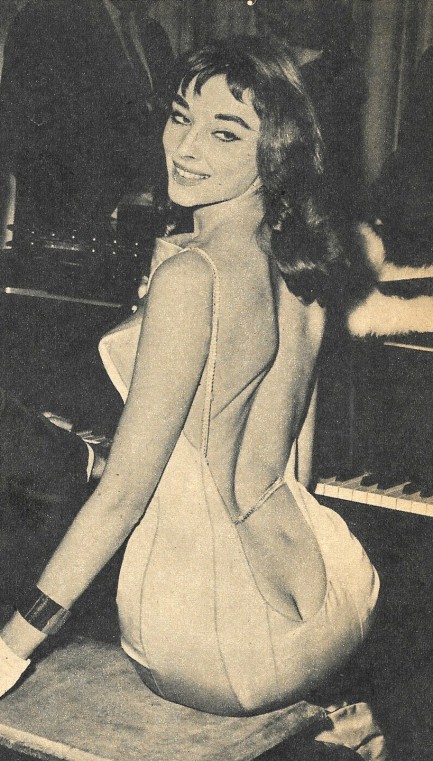  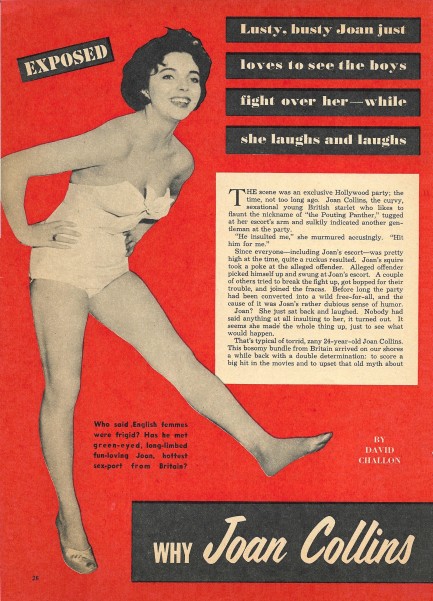 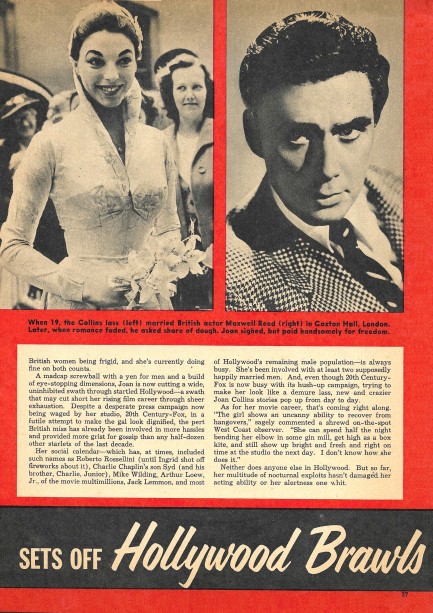 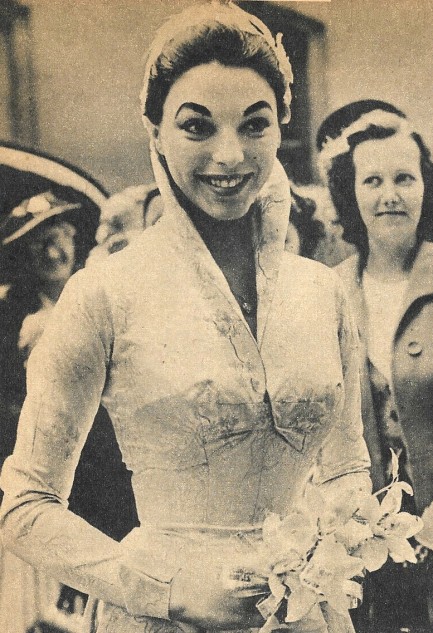 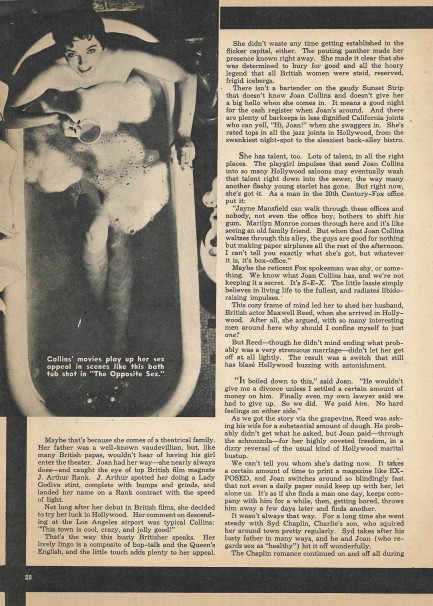 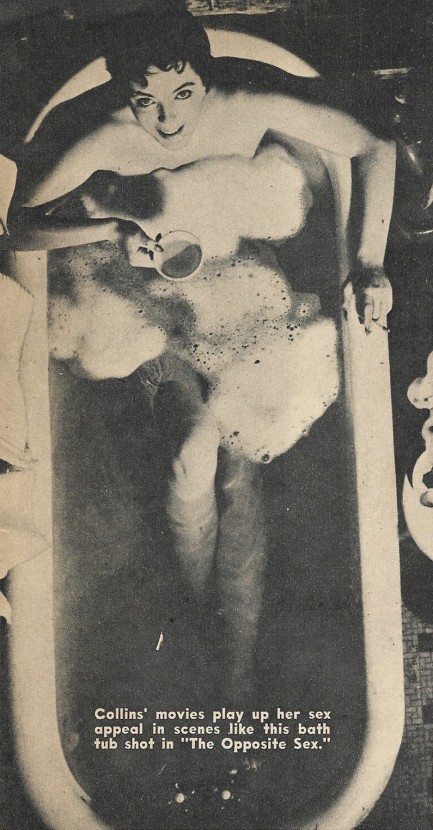 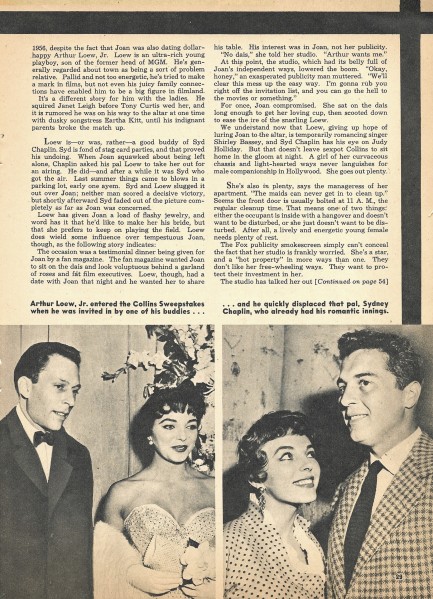 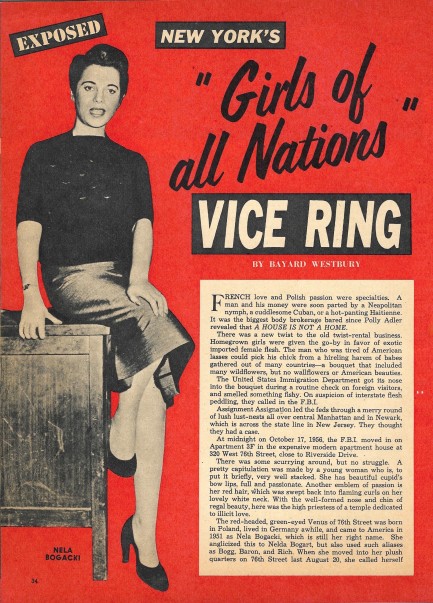 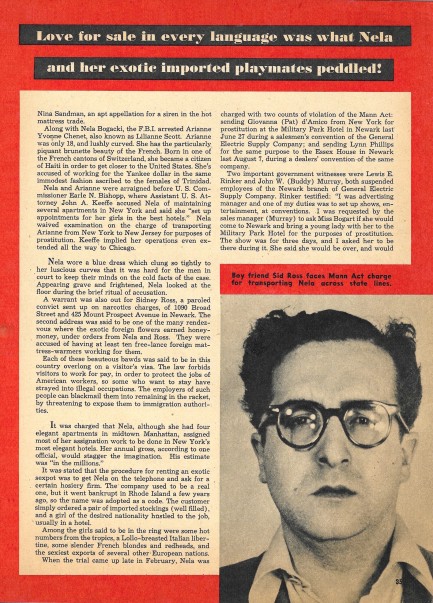 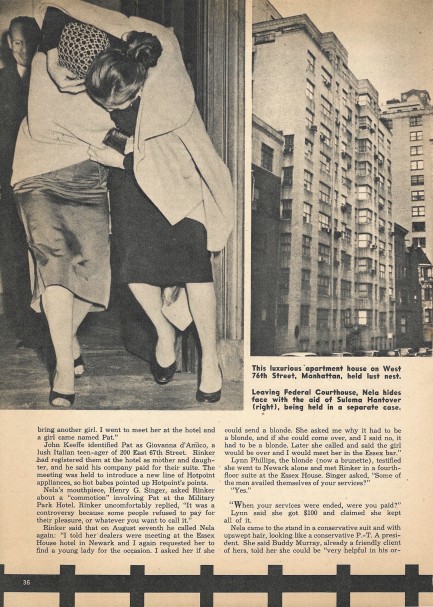 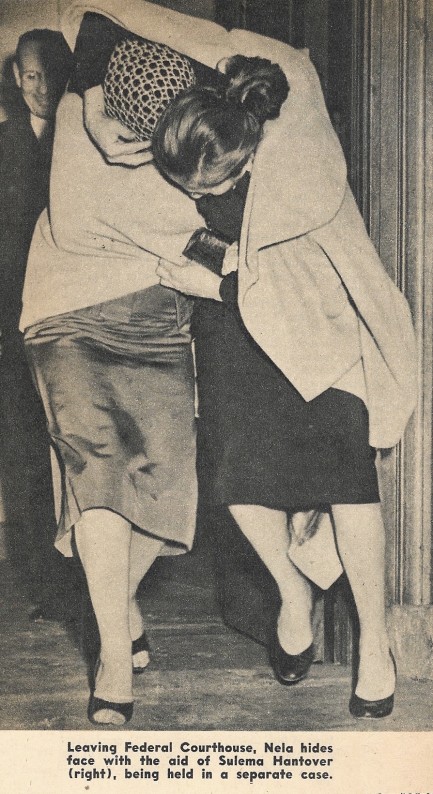 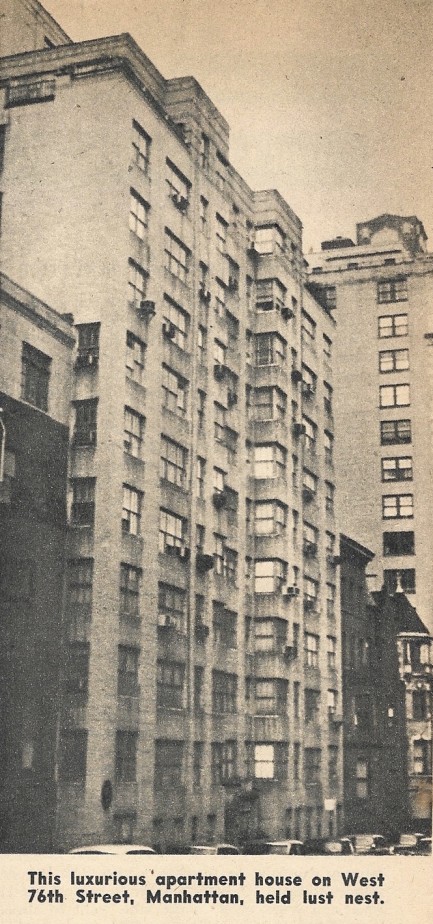 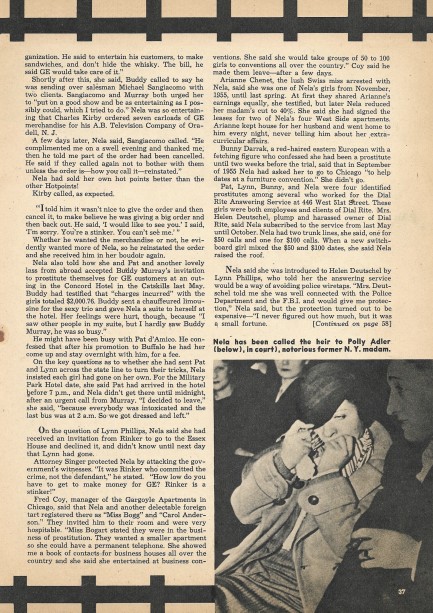 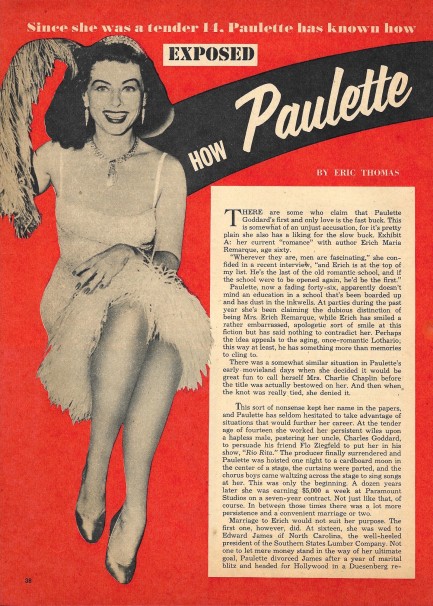 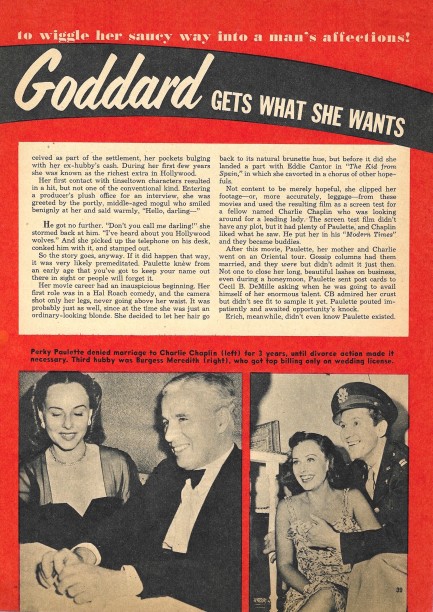  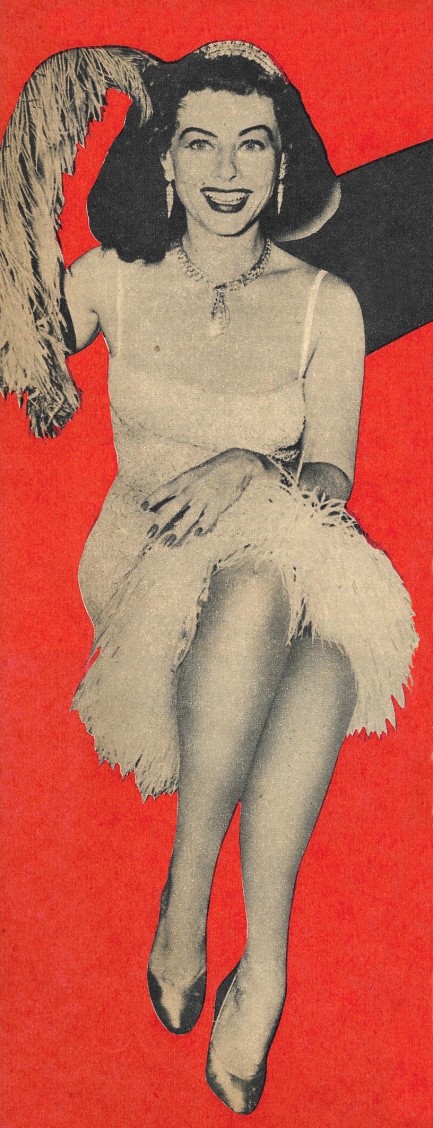
 In Casablanca no other place compares. 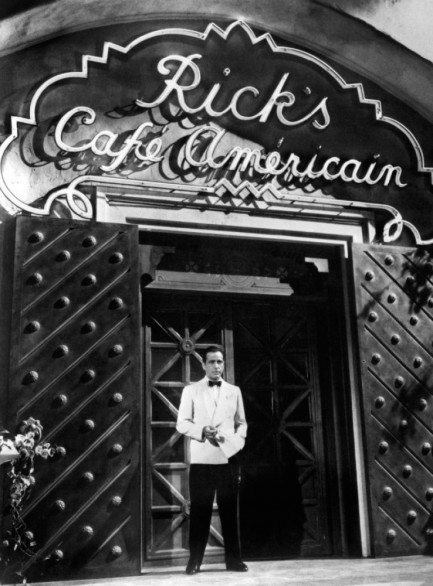
We're back in the house today—Casablanca, that is. Several days ago, on the film's Italian premiere date, we showed you some Italian posters, and today, on its U.S. premiere date, we're taking a close look at possibly the most famous fictional bar in cinema history—Rick's Café Americain. Casablanca is one of the greatest films ever made, and it's fair to say Rick's was a supporting character. Filmgoers of 1942 found themselves steeped in its otherworldly Moroccan atmosphere, as scenes were staged in its courtyard, dining room, gambling room, at its lively bar, and in Rick's roomy upstairs office and personal living quarters. We've never confirmed this, but we suspect one third of the film occurs inside Rick's Café. We have photos of every area we could find of this iconic and exotic “gin joint”—as Bogart cynically describes it—and we even turned up a blueprint.
You'd be tempted to think bars like Rick's exist only in film, but you'd be wrong. We've been to places that have exotic architecture, excellent food and drink, lively musical entertainment, well dressed international clientele, and the aura of being in the middle of a spy caper. The decadent colonial bar Abaco, located in Palma de Mallorca, comes immediately to mind, as does the supper club Meson Pansa Verde in Antigua, Guatemala, where they have live jazz in a converted wine cellar and a friend of ours once famously pushed his date into the pool. We've been to Rick's-like places in Mexico, the Caribbean, the Greek Islands, and, appropriately, Morocco, in both Fes and Marrakech (we're not fans of the Rick's that currently operates in Casablanca—same name, very diminished feel). But magical places do exist, which means even if Bogart's beloved café was never real, having those types of nights is possible. We recommend making it your mission to seek them out. clientele, and the aura of being in the middle of a spy caper. The decadent colonial bar Abaco, located in Palma de Mallorca, comes immediately to mind, as does the supper club Meson Pansa Verde in Antigua, Guatemala, where they have live jazz in a converted wine cellar and a friend of ours once famously pushed his date into the pool. We've been to Rick's-like places in Mexico, the Caribbean, the Greek Islands, and, appropriately, Morocco, in both Fes and Marrakech (we're not fans of the Rick's that currently operates in Casablanca—same name, very diminished feel). But magical places do exist, which means even if Bogart's beloved café was never real, having those types of nights is possible. We recommend making it your mission to seek them out. 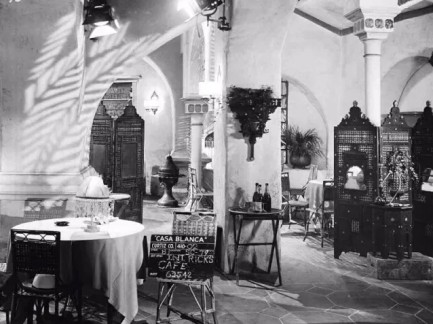 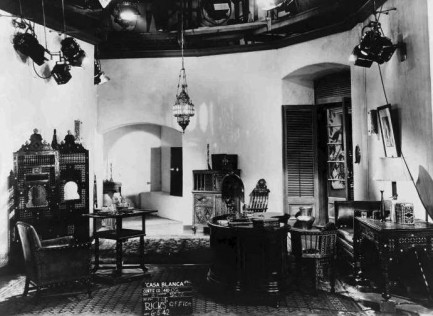 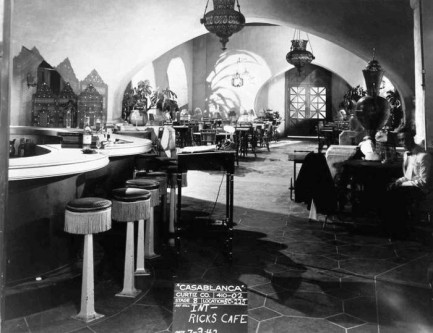 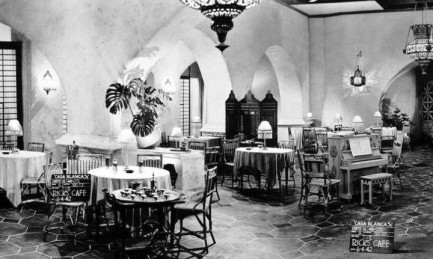 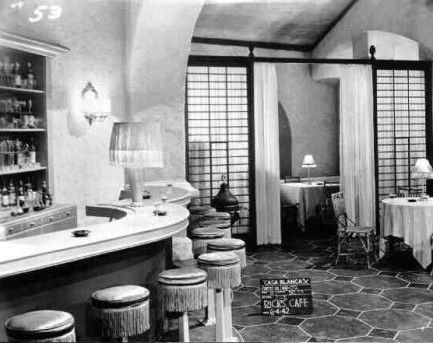 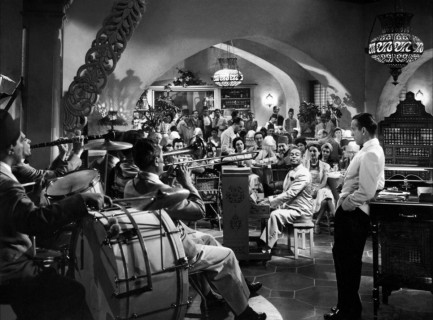 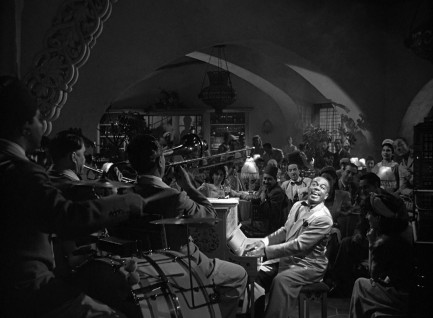 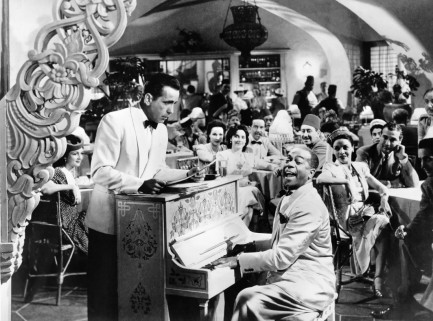 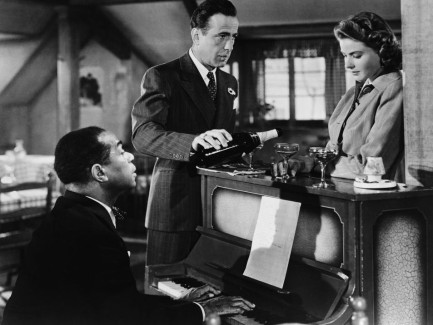 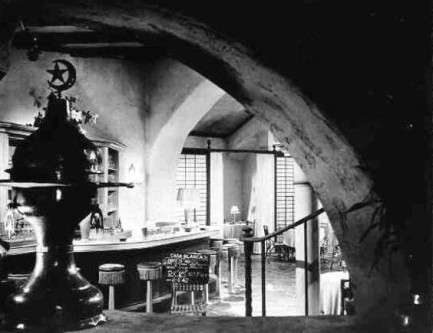 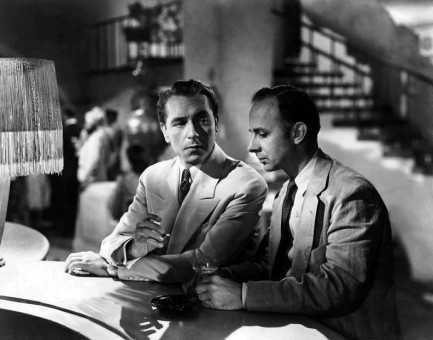 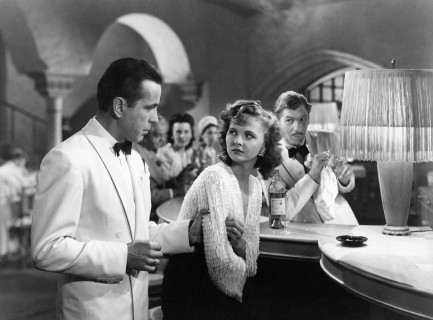 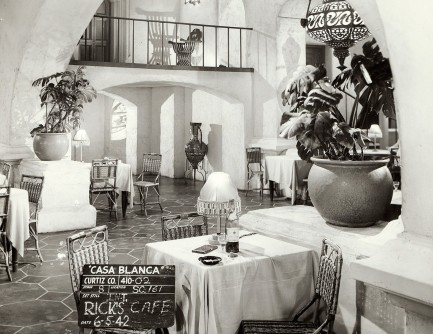 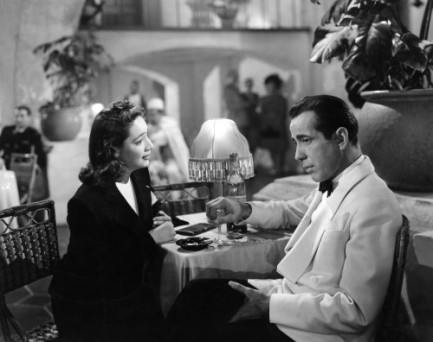 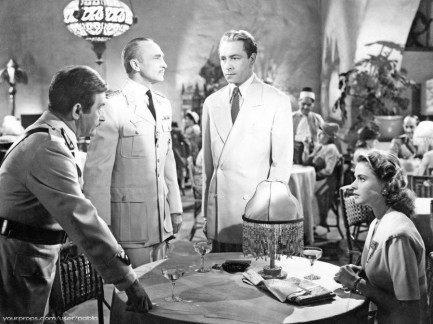 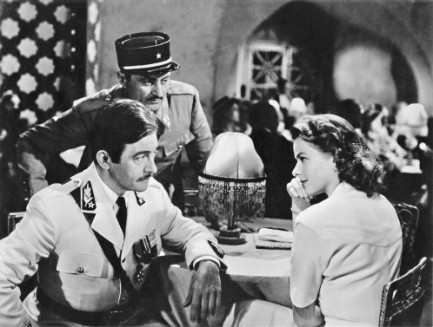  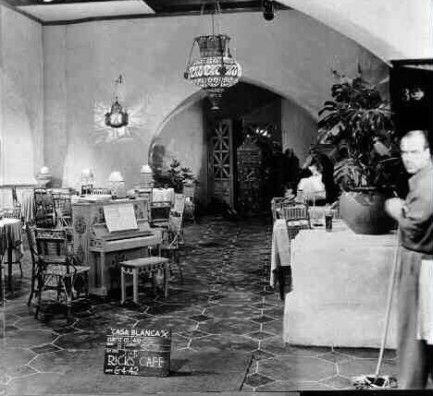 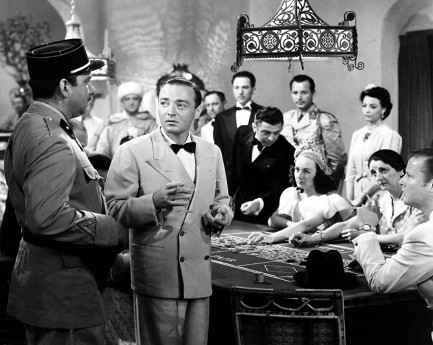 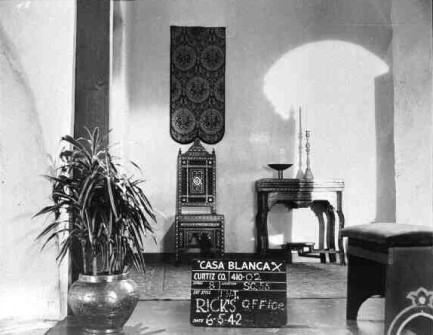 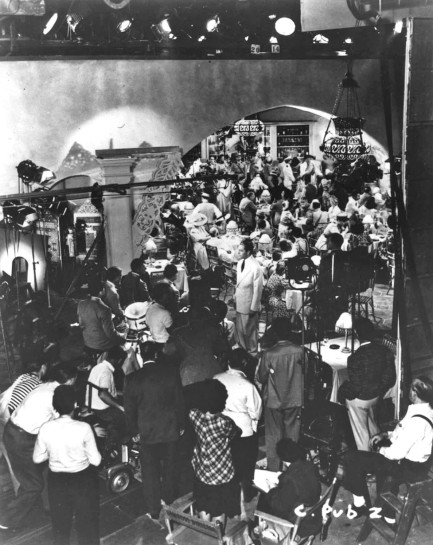 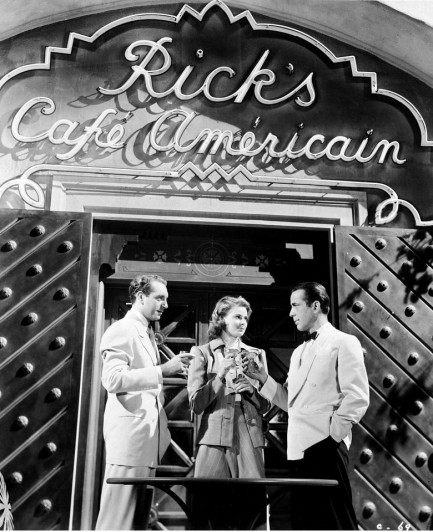
 It's mostly for his protection, but it's also for everyone else's. 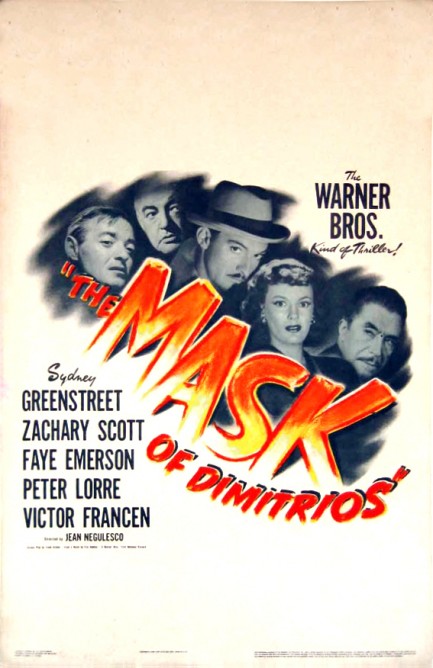
We read the novel The Mask of Dimitrios a couple of years ago, so it was a given we'd eventually talk about the movie. Starring Petter Lorre and Sydney Greenstreet, it deals with a legendary malefactor named Dimitrios Makropoulos who washes up dead on a Turkish beach and draws the interest of a novelist, who decides to research the dead man's life with an eye toward writing a thriller about it. That's a great set-up for a movie right there, and it's even cooler because everything happens in Europe. Lorre, who plays the author, traces the movements of Dimitrios the bogeyman from Istanbul, to Athens, to Sofia, and finally to Paris, seeking to illuminate the man's life and criminal career.
Flashbacks tell us how evil Dimitrios was. Nothing was beyond him—theft, blackmail, political crimes, murder. We're talking irredeemable badness, a virus, a plague. Lorre and Greenstreet cross paths and decide to unravel the Dimitrios mystery together. Its solution offers the possibility of financial reward—one million francs. Lorre is less interested in those than a story he can turn into a great novel, but money up front never hurts. Unless it gets you killed. But while the flashbacks offer crucial exposition, they also shift focus from the film's two unique leads, and in so doing sap the narrative of momentum. They could have been shorter. More screen time for Lorre and Greenstreet would have been the benefit.
The Mask of Dimitrios is classified as a film noir on many websites, but as a drama on AFI.com, which is where we go for genre clarity because crowd sourced sites like Wikipedia and IMDB cast an excessively wide net with their categorizations. Some readers may disagree about whether this particular film is a noir, but what's true is it doesn't have a large number of the usual noir gimmicks, save for those interminable flashbacks, and occasional clever work with shadows. It almost entirely lacks other forms of noir iconography, and particularly lacks the key element of a disaffected central character or character that's screwed and gets more screwed as the plot progresses. On the other hand most of the players are shady and/or amoral.
We know what you're thinking. We aren't a pure pulp site, so how can we be purists about film noir? We're not. We tell you right in the “About Us” section that we're expanding the idea of pulp just for our personal pleasure, not trying to convince readers to redefine it in defiance of what is understood to be pure pulp. Going into The Mask of Dimitrios expecting film noir might lead to disappointment for noir fans, so we're just letting you know where the movie stands. It has its charms, regardless, but overall it's decent, not good, and certainly falls short of being excellent. Even so, watching old crime movies is incredibly satisfying, even when they aren't top notch. The Mask of Dimitrios premiered in today in 1944.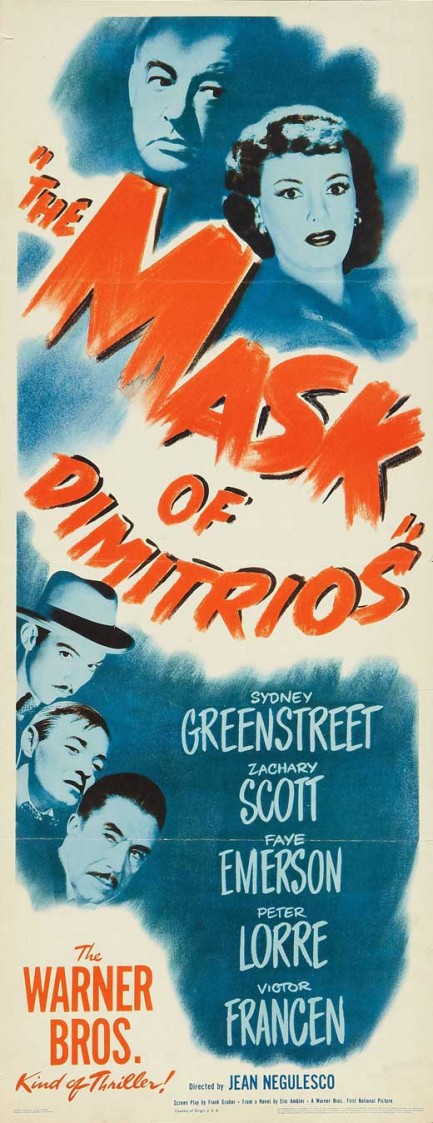 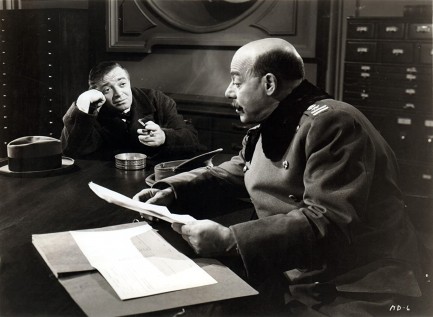 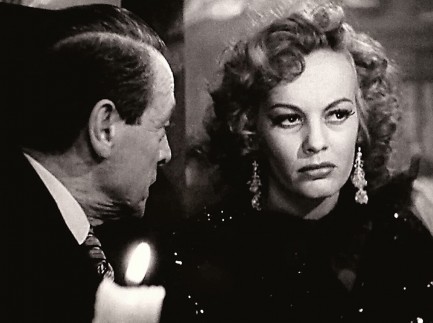 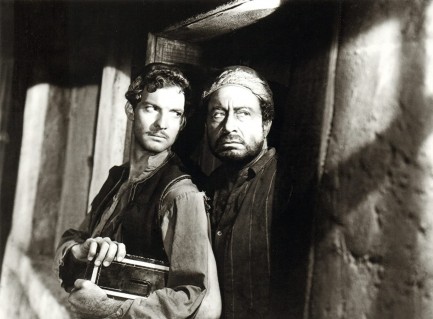 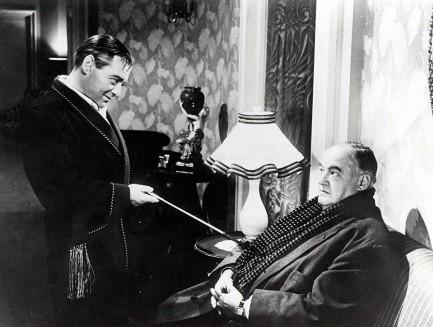 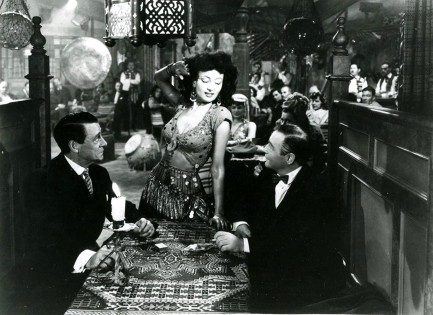 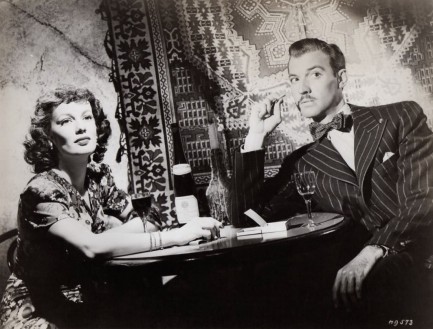 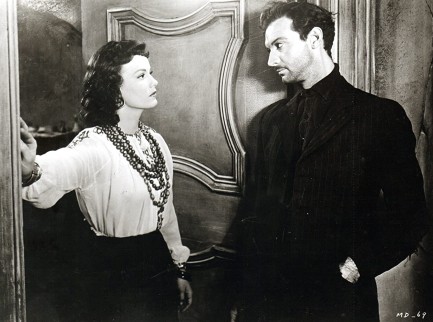 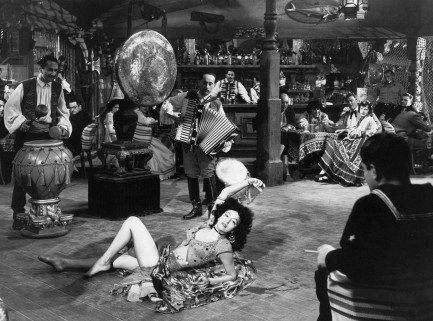 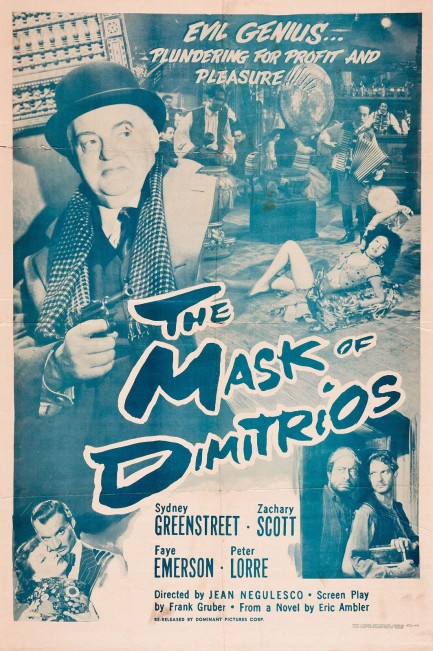
 Aussie magazine delves into love, sex, war, crime, and more. 
We're back to Man's Epic today, a difficult to find Aussie adventure magazine published by K.G. Murray Co., the same group responsible for the amazing Adam magazine. K.G. Murray Co.'s provenance goes all the way back to 1936, when an Aussie advertising worker named Kenneth Gordon Murray launched Man magazine from offices in Sydney, and its mix of adventure, cartoons, and women caught on with readers. Murray expanded and would eventually publish Man Junior, Cavalcade, Gals and Gags, Adam, and numerous other titles. By 1954 the company was churning out eighteen monthly publications.
Man's Epic, which is not related to the U.S. men's magazine of the same name, came in October 1967, and switched to bimonthly in 1971, with the above issue published to span May through June 1973. Unfortunately, Man's Epic died in late 1977 or possibly early 1978, at the same time numerous men's magazines were withering with the changing times. Murray's umbrella company Publishers Holding Ltd. had become targeted in a takeover bid that resulted in K.G. Murray Co. being sold to Australian Consolidated Press, or ACP. After that point Murray's magazines were shuttered one by one by their new owners.
We're fans of Man's Epic, though this is only the second issue we've managed to buy. Inside you get articles about practitioners of warcraft, a story on motorcycle accidents that doesn't spare the carnage, and various models whose identities are new to us. There's also a lengthy feature on shocking sex rites, including a bit on San Simón, aka Maximón, the Mayan trickster deity native to our former beloved home of Guatemala. We once took a long drive from Guatemala across Honduras with an effigy of Maximón in the vehicle, and we learned about his trickster nature firsthand.
That story, by the way, was penned by Jane Dolinger, a trailblazing travel writer who ventured everywhere from the Sahara to the Amazon and wrote eight books, but is perhaps a bit forgotten today. The editors make sure readers know Dolinger is hot by publishing a glamour photo of her, which is a pretty sexist move, though she posed for provocative shots often. Meanwhile her framing of other cultures' sexual practices as abnormal is textbook racism. Abandon all hope ye who enter this magazine!  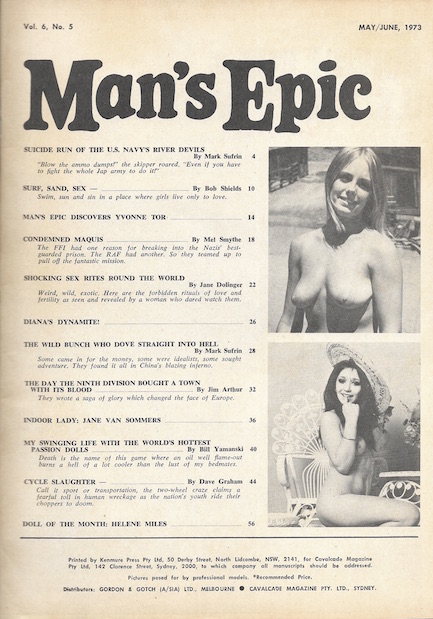 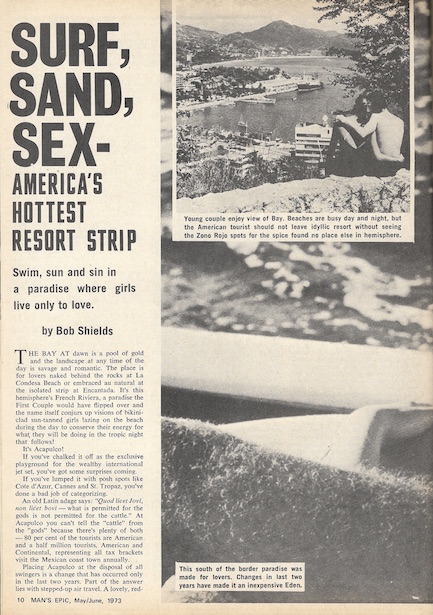 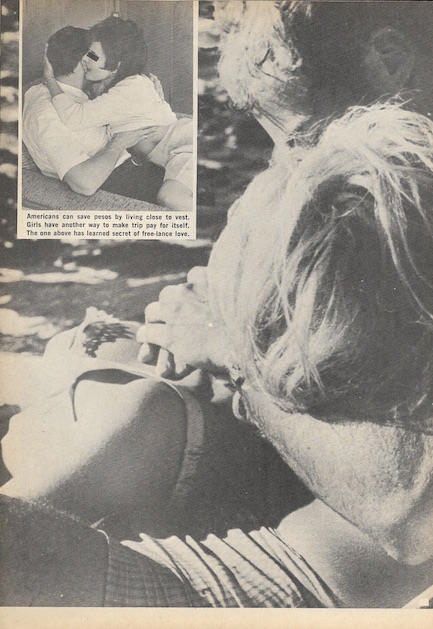 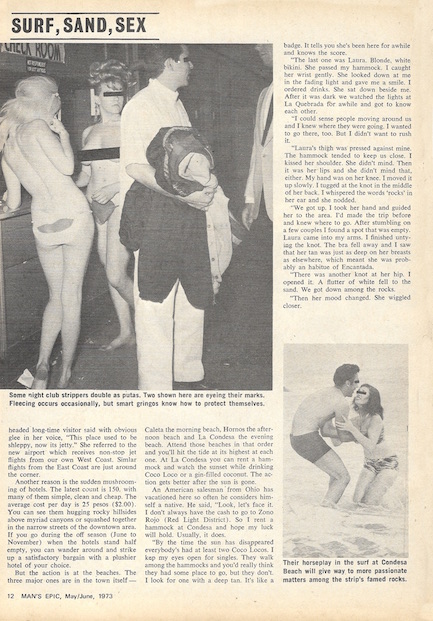 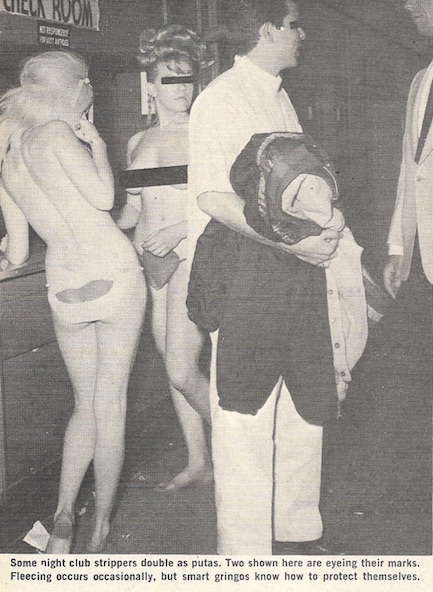 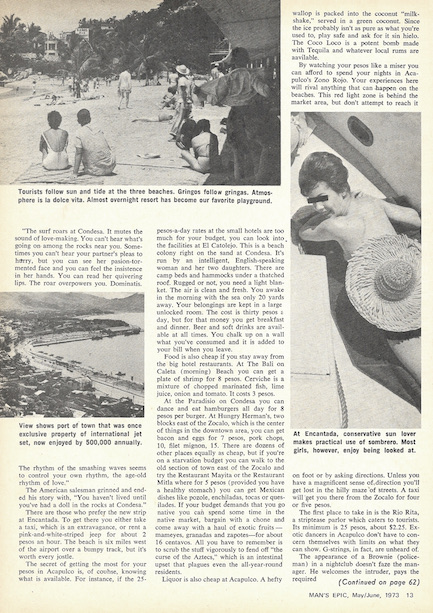 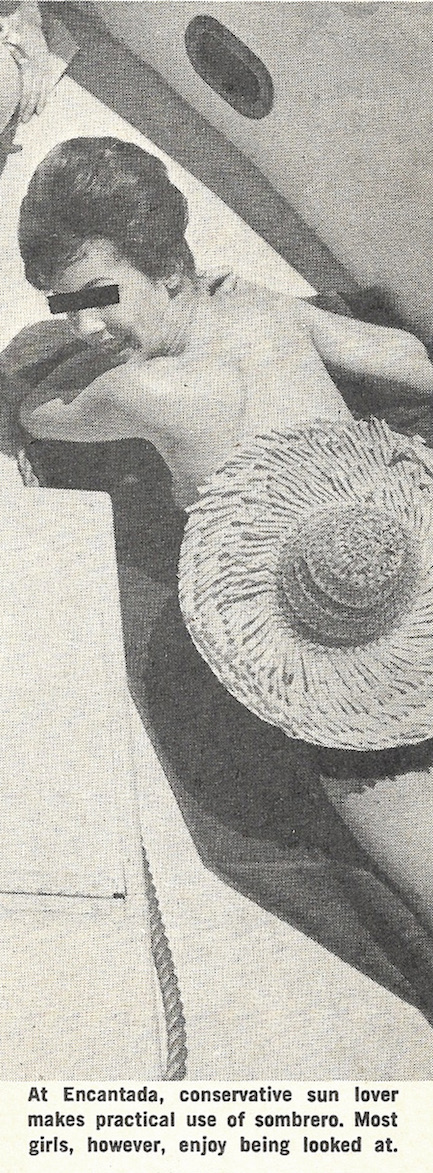 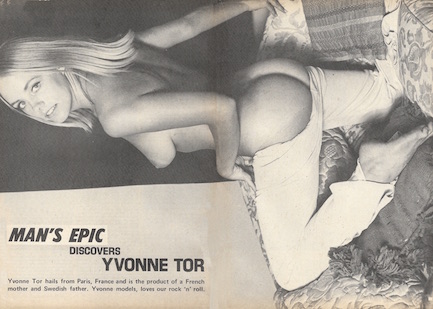 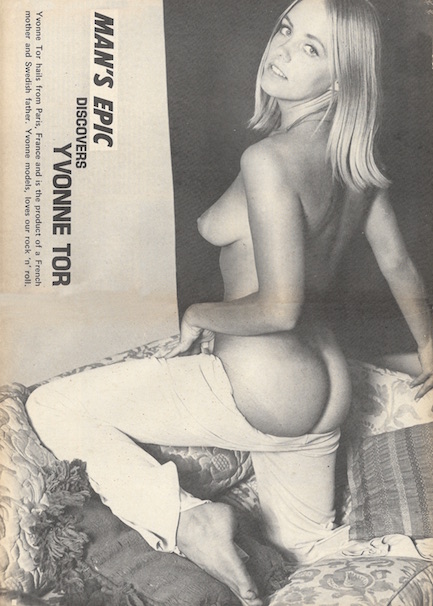  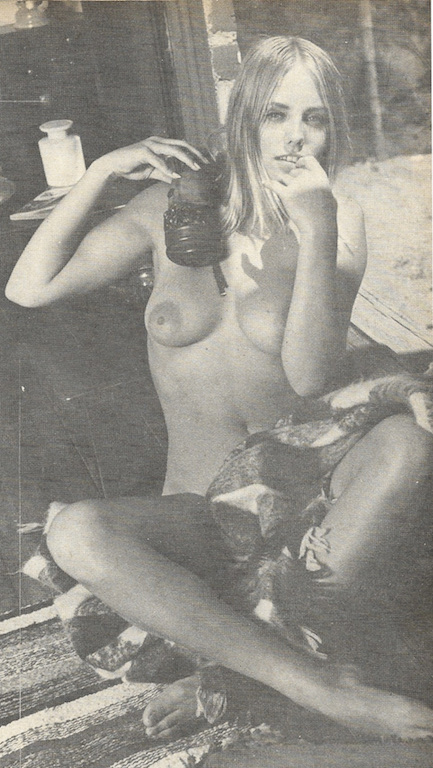 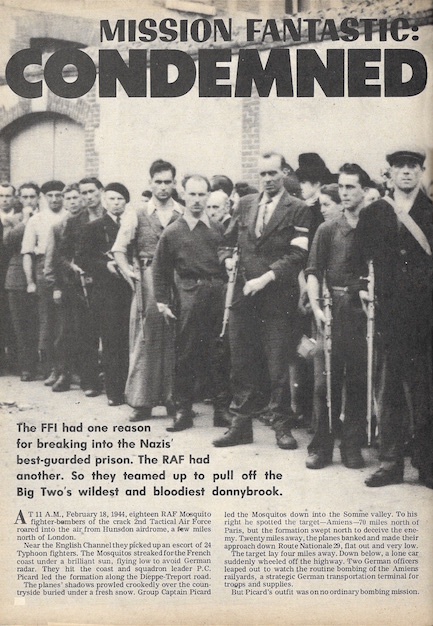 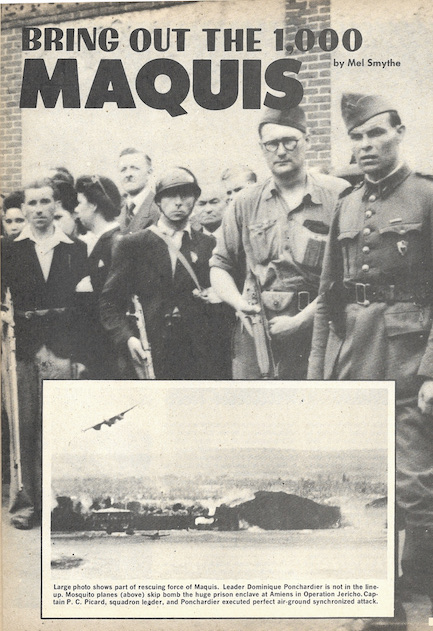 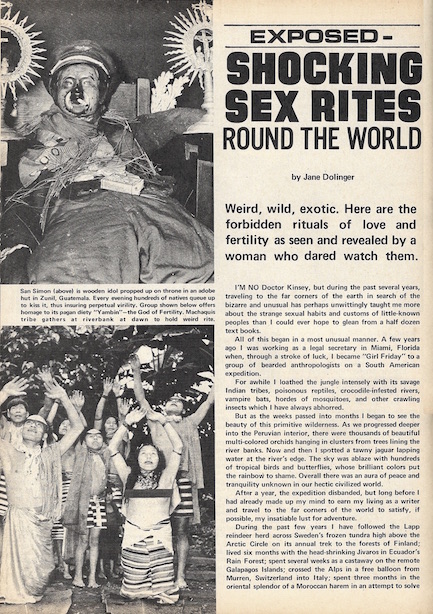 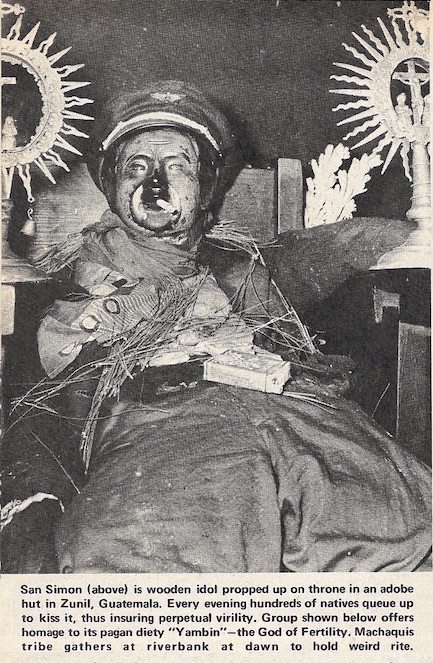 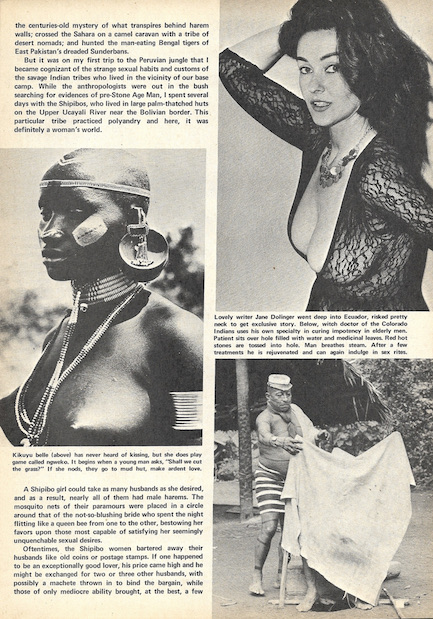  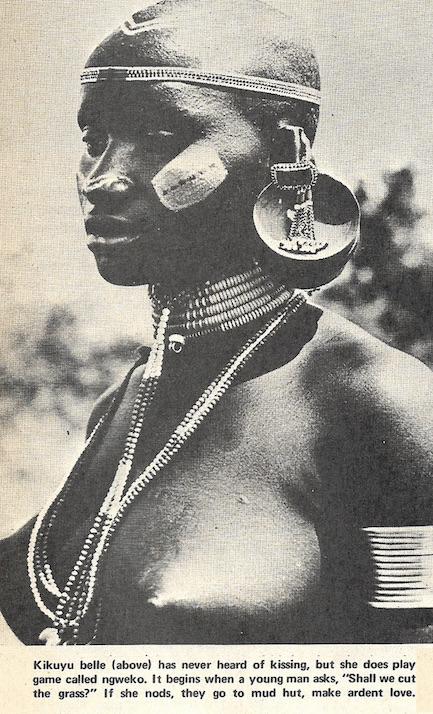 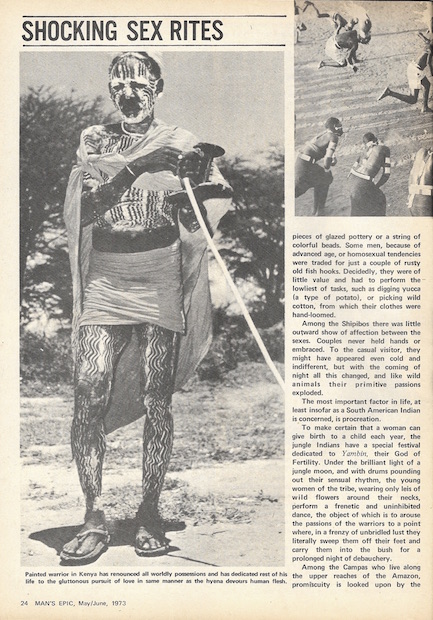 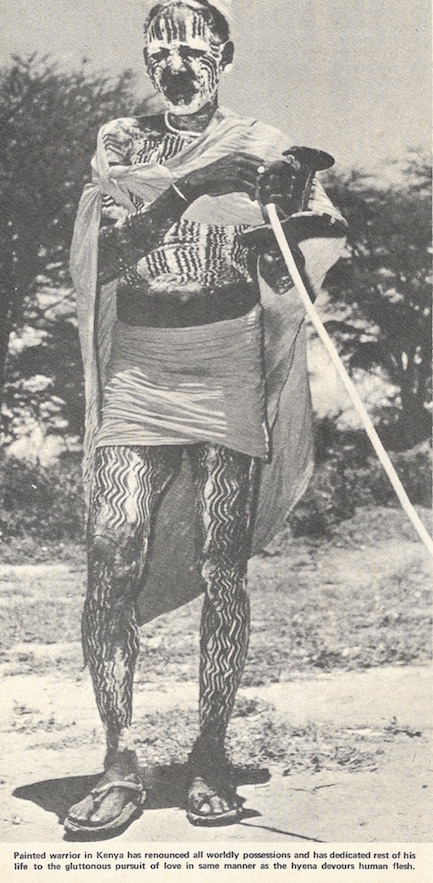 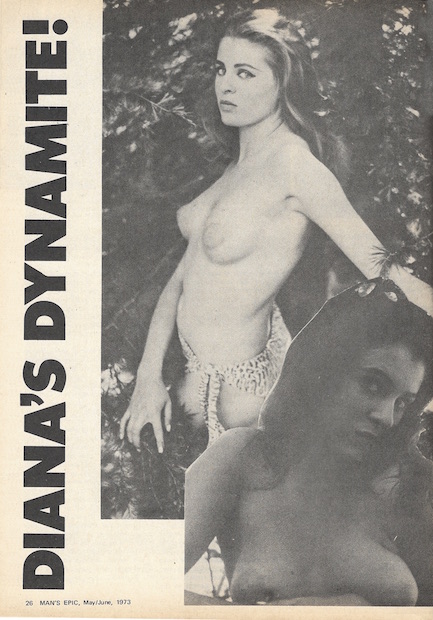    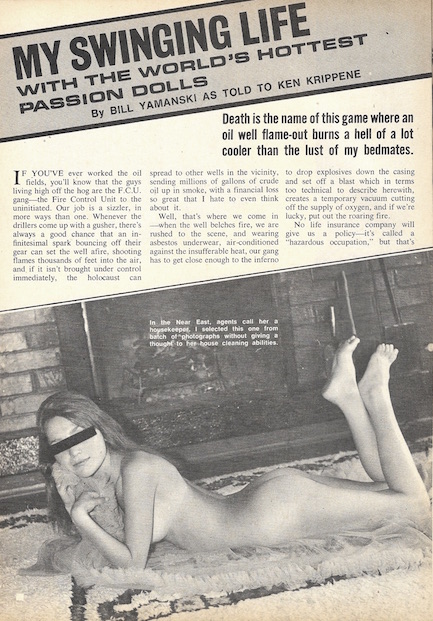  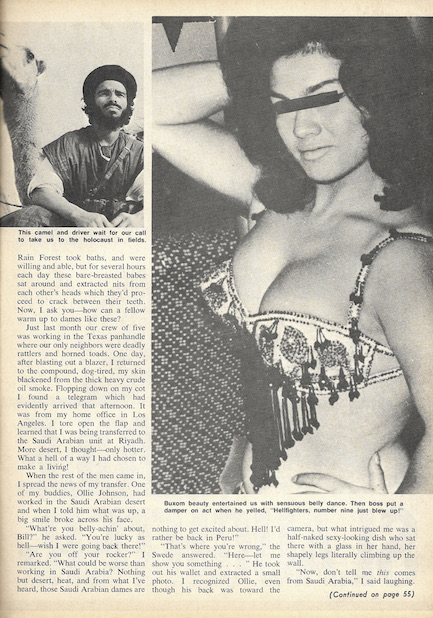 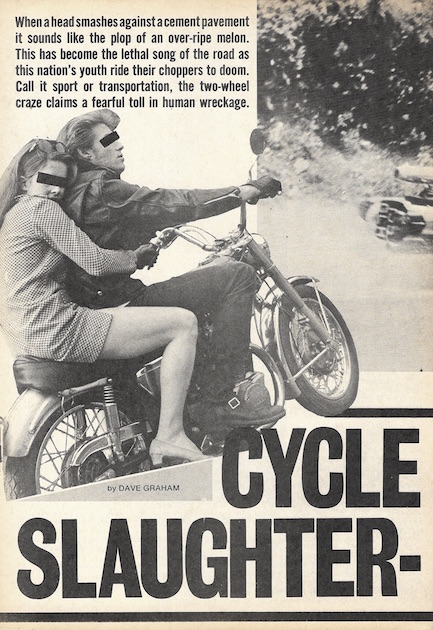 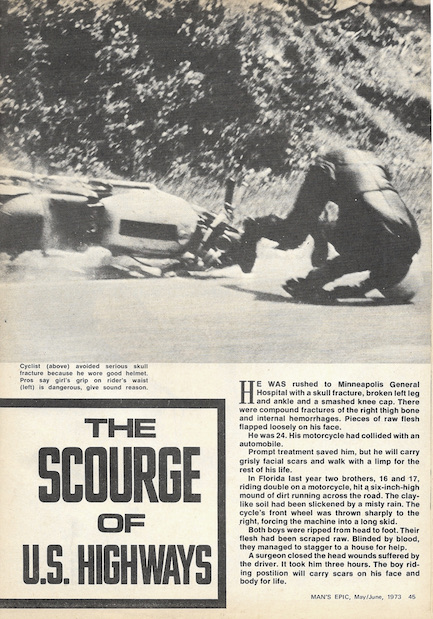   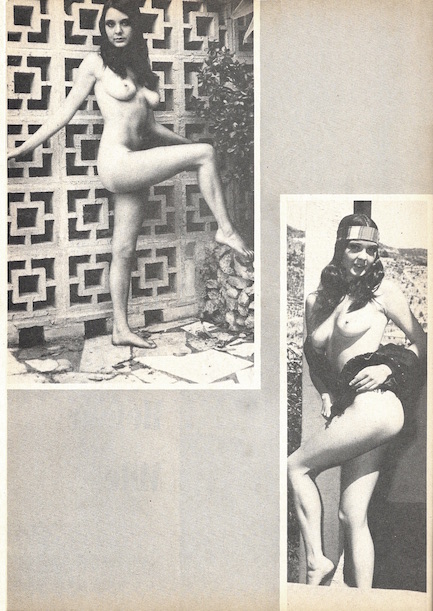 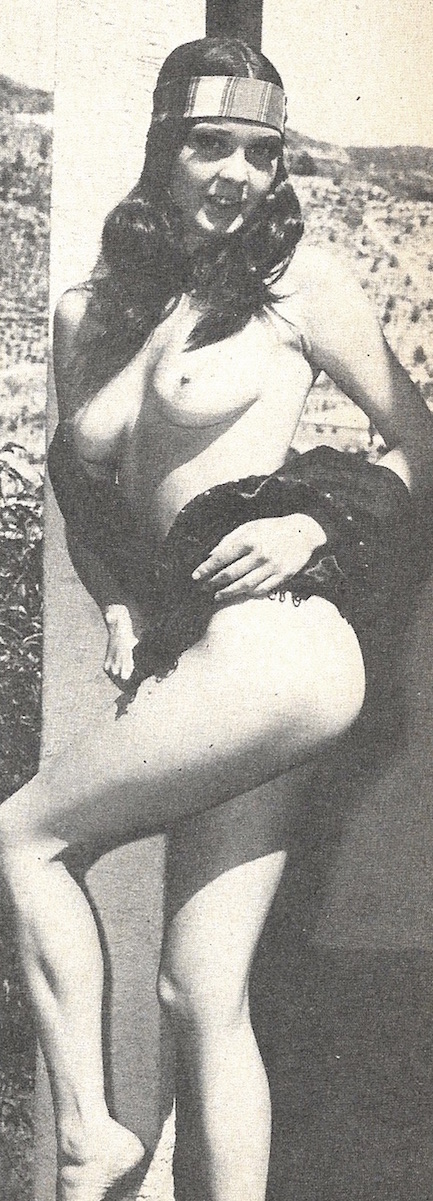 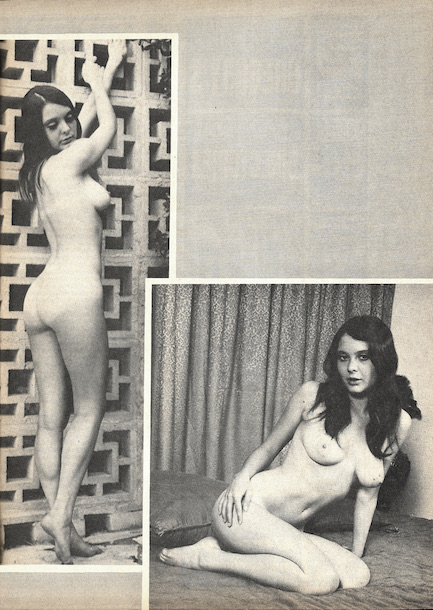   
 Divorce probably would have been the easier option. 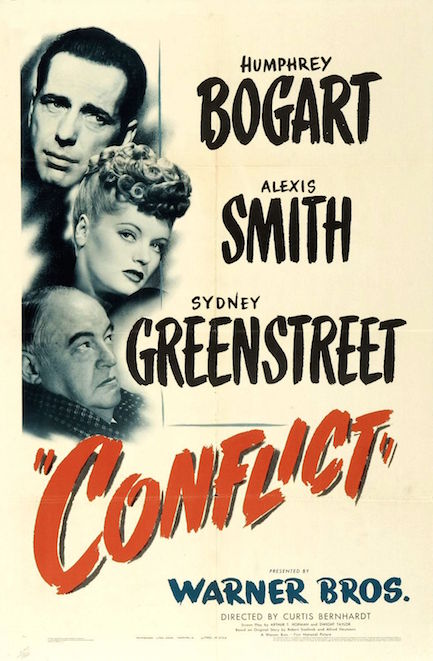
Conflict was Humphrey Bogart's follow-up to the crowd pleasing To Have and Have Not, and he takes a dark turn as a man whose bad marriage is complicated by the fact that he's fallen in love with his sister-in-law. He's willing to kill to be free, but his plan goes sideways, as they always do. We won't go into detail except to note that, interestingly, Bogart begins to see the same jumbled pyramidal shape everywhere—in a pile of fallen logs, in an architectural drawing, in the kindling set up to start a bonfire, etc. It's a Hitchcockian touch designed to symbolize the inner conflict of the title, but why exactly is he seeing these things? Is it because he killed his wife? Or because he botched his opportunity and now she's trying to drive him insane? We won't tell you. We'll only say that the winding road toward a resolution is reasonably entertaining, and Bogart can pull even a flawed film to the positive side of the ledger. Conflict, which co-starred Alexis Smith and Sydney Greenstreet, premiered in the U.S. today in 1945. 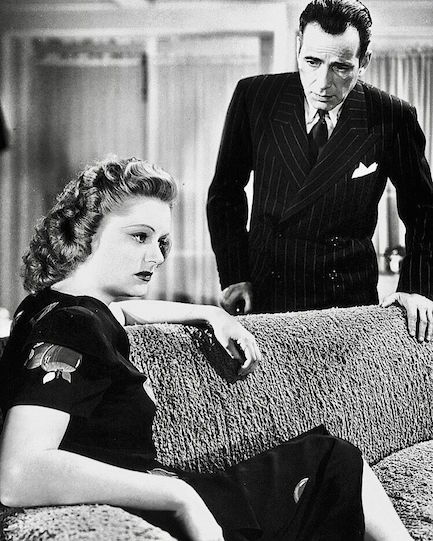 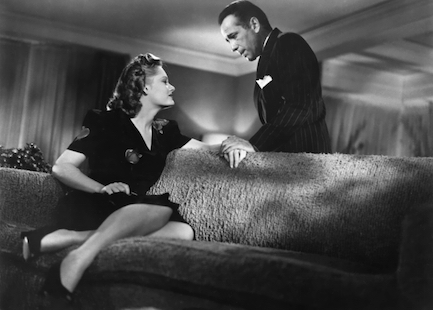 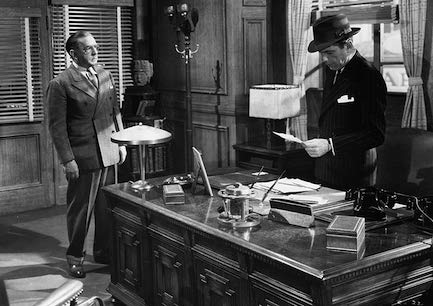 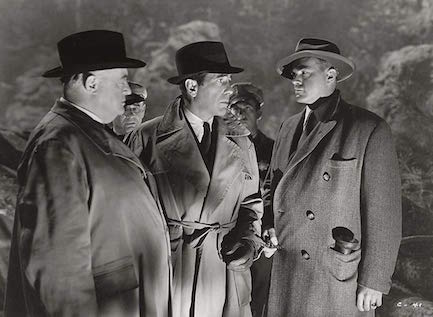 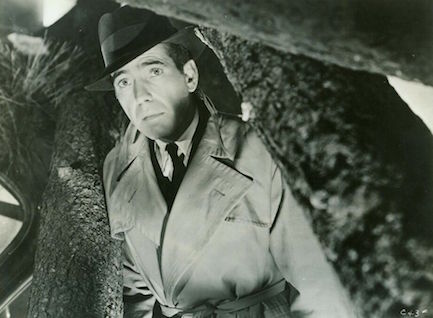 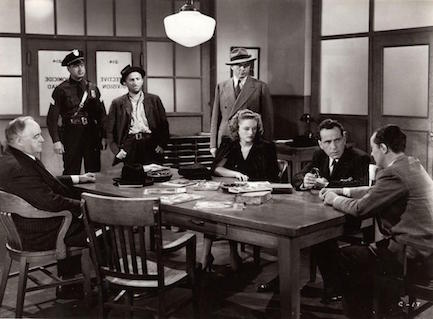 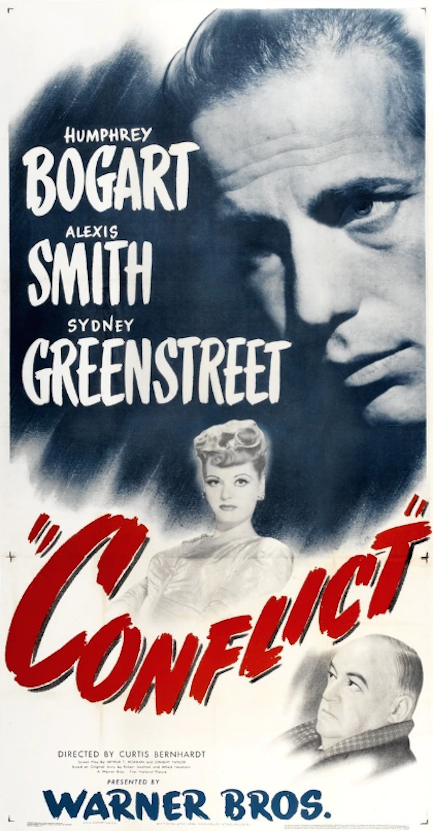
 From out of a clear blue sky. 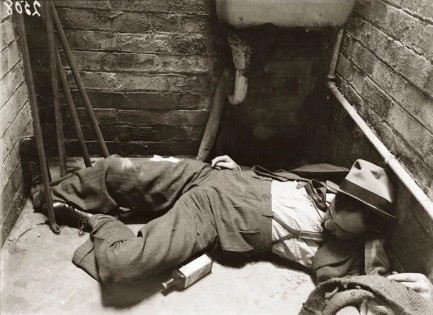
This photo is from an archive maintained by Sydney Living Museums and shows a dead man in a public toilet in Sydney, Australia. Police records are incomplete, but suggest he fell from a footpath atop a wall located above the enclosure. It was a brutal fall. The man's right leg snapped just above the ankle and spots of blood are on his shirt, indicating a possible cranial fracture. While the report is vague about the man, it's clear about his bottle—it's Waterbury’s Compound, a tonic and cough remedy popular then and still in existence today. In contrast to the man, the bottle is intact. We wonder if he was reading the label and didn't watch where he was walking. Texters beware. The photo was shot around 1937 or 1938.
 Crime pays with a series of beautiful mugshots. 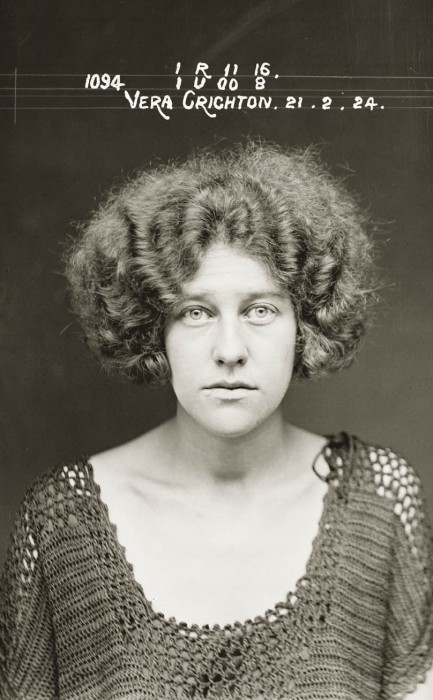 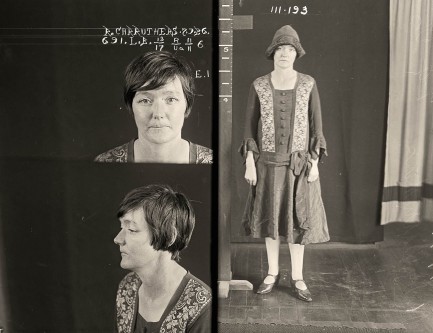 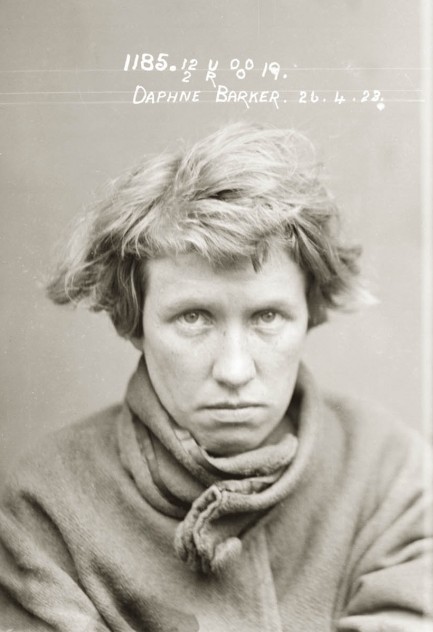 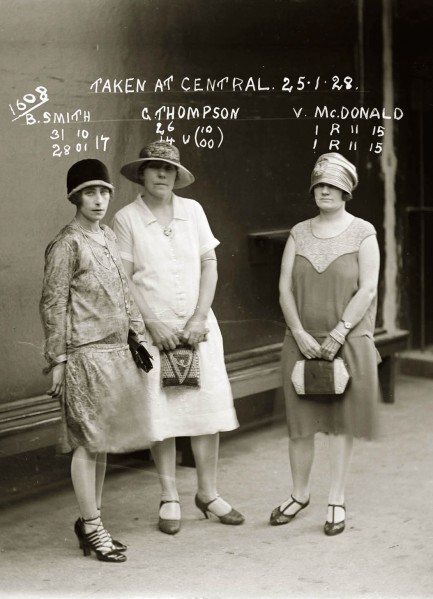 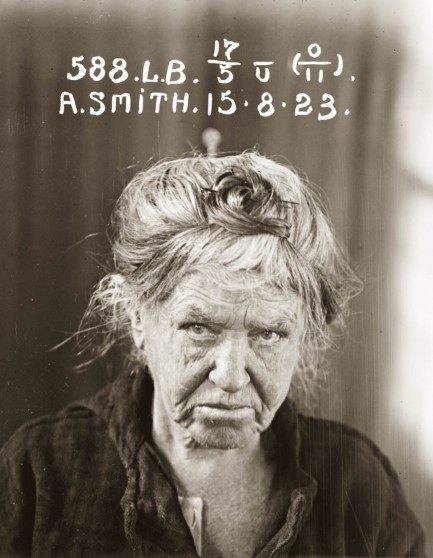 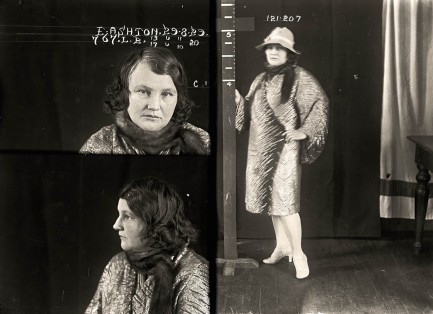 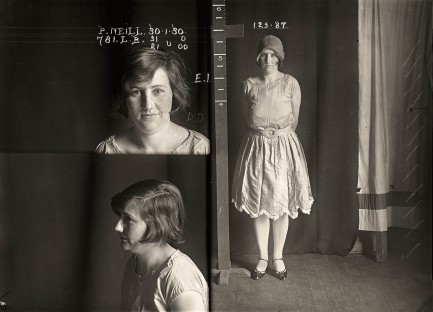 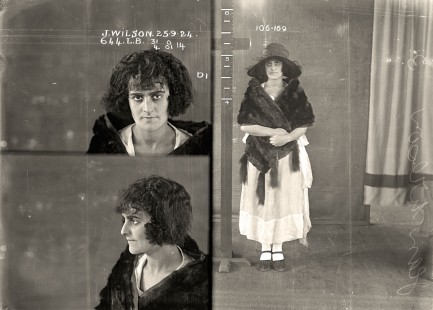 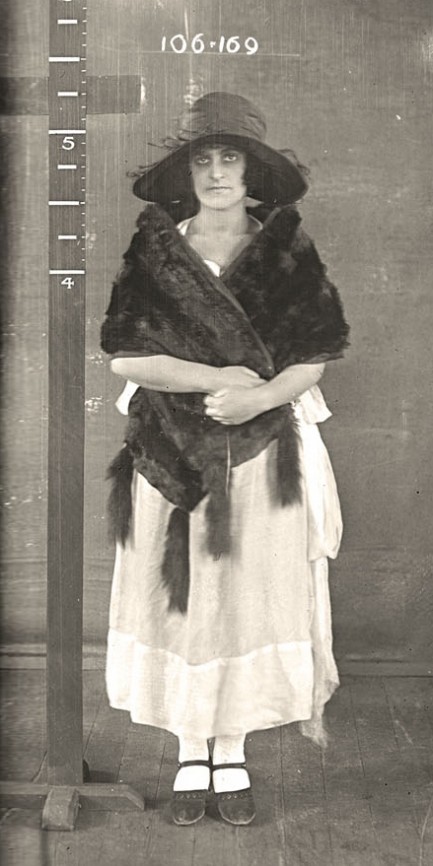 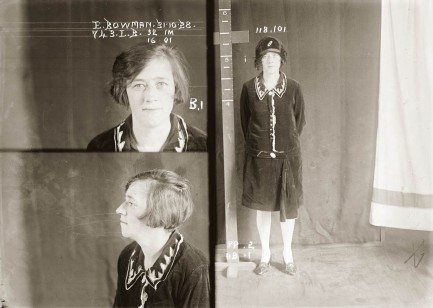 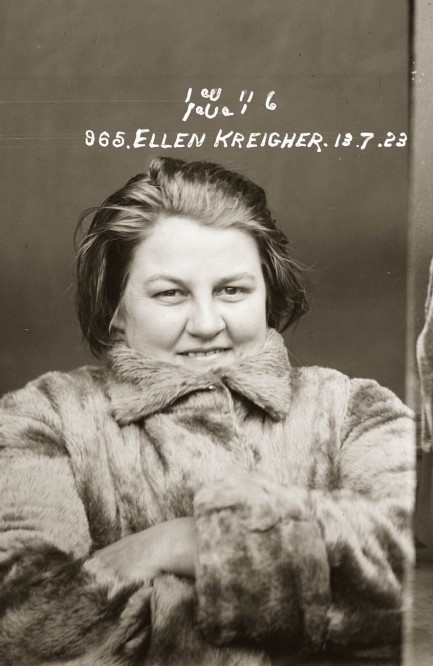 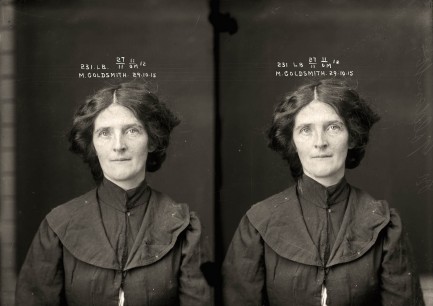 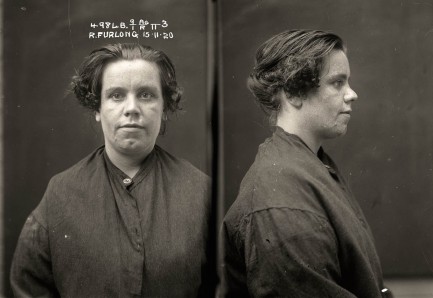 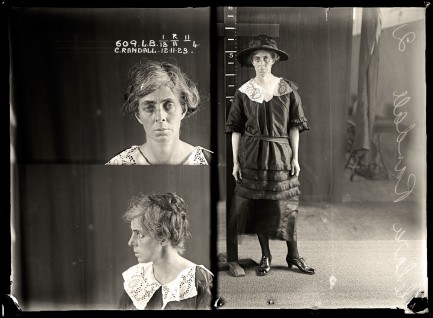 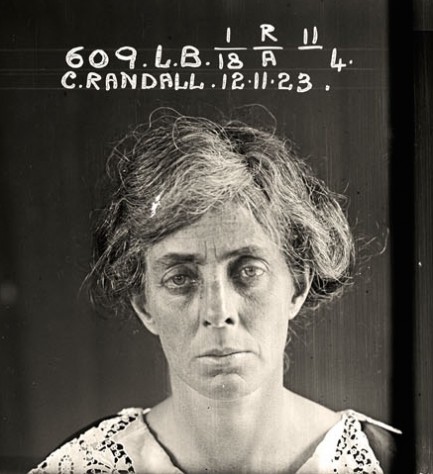 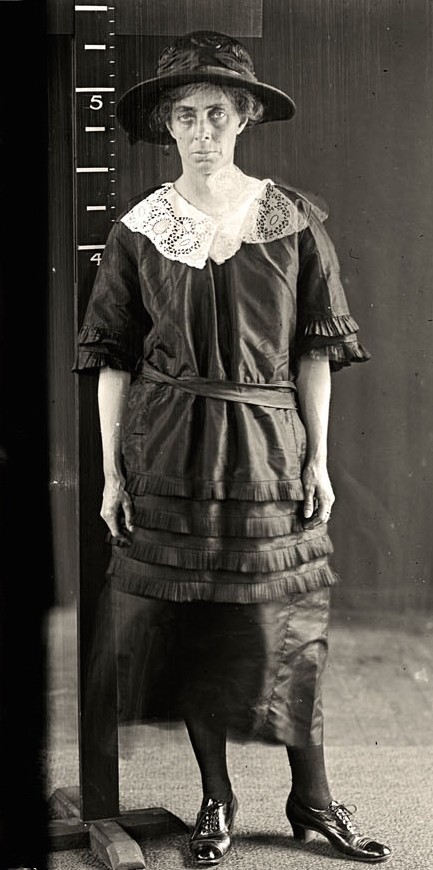 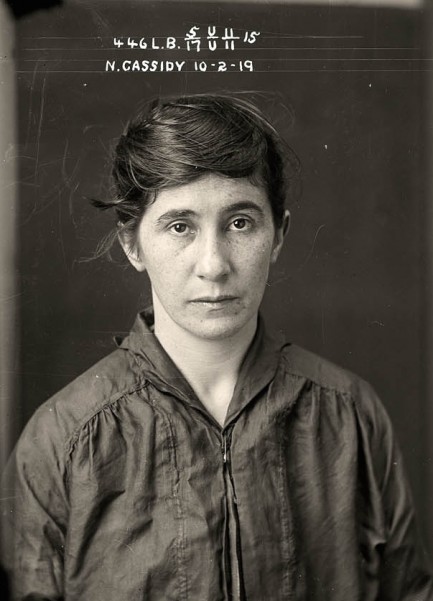 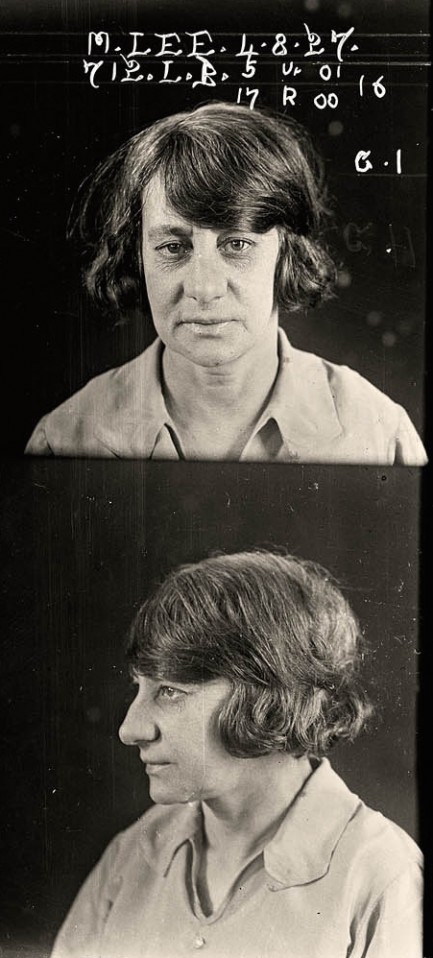 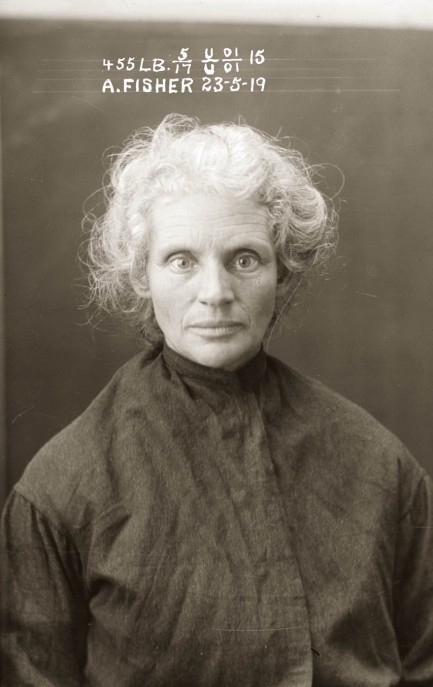 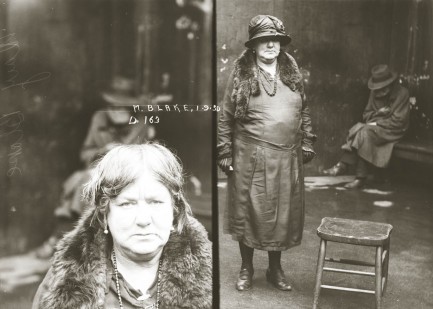 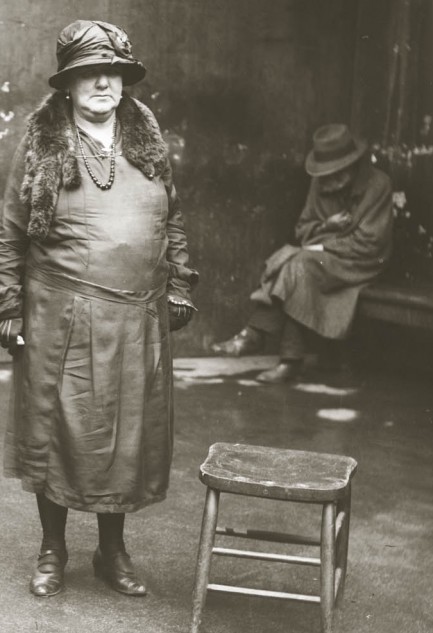
Above is a collection of police booking photos of women arrested in Sydney, Australia during the late 1910s to early 1930s. These were originally shot and developed using a dry glass plate process, warehoused for decades, unearthed several years back, and shared online by Sydney Living Museums. They weren't curated as a women-only group—we grabbed only women because we were struck by their remarkable faces. We also like the last shot, just above, which features a mystery figure in the background keeping her or his—looks like a dude to us—face lowered.
Charges on the group range from robbery, to “attempting to procure a miscarriage on behalf of a third party,” to plain old murder. You notice a booking photo was a little different back then. Full body framing in open rooms was common. Because of the composition, shallow focus, and hyper-detailed glass plate process, these are (presumably accidental) art shots. They serve as a companion collection to the previous set of Australian mugshots we shared, which you can see here. You'll notice we've repeated a couple, which means you can learn specifically what they did to get arrested.

|
 |

The headlines that mattered yesteryear.
1945—Churchill Given the Sack
In spite of admiring Winston Churchill as a great wartime leader, Britons elect
Clement Attlee the nation's new prime minister in a sweeping victory for the Labour Party over the Conservatives. 1952—Evita Peron Dies
Eva Duarte de Peron, aka Evita, wife of the president of the Argentine Republic, dies from cancer at age 33. Evita had brought the working classes into a position of political power never witnessed before, but was hated by the nation's powerful military class. She is lain to rest in Milan, Italy in a secret grave under a nun's name, but is eventually returned to Argentina for reburial beside her husband in 1974. 1943—Mussolini Calls It Quits
Italian dictator Benito Mussolini steps down as head of the armed forces and the government. It soon becomes clear that Il Duce did not relinquish power voluntarily, but was forced to resign after former Fascist colleagues turned against him. He is later installed by Germany as leader of the Italian Social Republic in the north of the country, but is killed by partisans in 1945. 1915—Ship Capsizes on Lake Michigan
During an outing arranged by Western Electric Co. for its employees and their families, the passenger ship Eastland capsizes in Lake Michigan due to unequal weight distribution. 844 people die, including all the members of 22 different families. 1980—Peter Sellers Dies
British movie star Peter Sellers, whose roles in Dr. Strangelove, Being There and the Pink Panther films established him as the greatest comedic actor of his generation, dies of a heart attack at age fifty-four.
|

|
|

It's easy. We have an uploader that makes it a snap. Use it to submit your art, text, header, and subhead. Your post can be funny, serious, or anything in between, as long as it's vintage pulp. You'll get a byline and experience the fleeting pride of free authorship. We'll edit your post for typos, but the rest is up to you. Click here to give us your best shot.

|
|






















































 clientele, and the aura of being in the middle of a spy caper. The decadent colonial bar Abaco, located in Palma de Mallorca, comes immediately to mind, as does the supper club Meson Pansa Verde in Antigua, Guatemala, where they have live jazz in a converted wine cellar and a friend of ours once famously pushed his date into the pool. We've been to Rick's-like places in Mexico, the Caribbean, the Greek Islands, and, appropriately, Morocco, in both Fes and Marrakech (we're not fans of the Rick's that currently operates in Casablanca—same name, very diminished feel). But magical places do exist, which means even if Bogart's beloved café was never real, having those types of nights is possible. We recommend making it your mission to seek them out.
clientele, and the aura of being in the middle of a spy caper. The decadent colonial bar Abaco, located in Palma de Mallorca, comes immediately to mind, as does the supper club Meson Pansa Verde in Antigua, Guatemala, where they have live jazz in a converted wine cellar and a friend of ours once famously pushed his date into the pool. We've been to Rick's-like places in Mexico, the Caribbean, the Greek Islands, and, appropriately, Morocco, in both Fes and Marrakech (we're not fans of the Rick's that currently operates in Casablanca—same name, very diminished feel). But magical places do exist, which means even if Bogart's beloved café was never real, having those types of nights is possible. We recommend making it your mission to seek them out.
















































































































































































